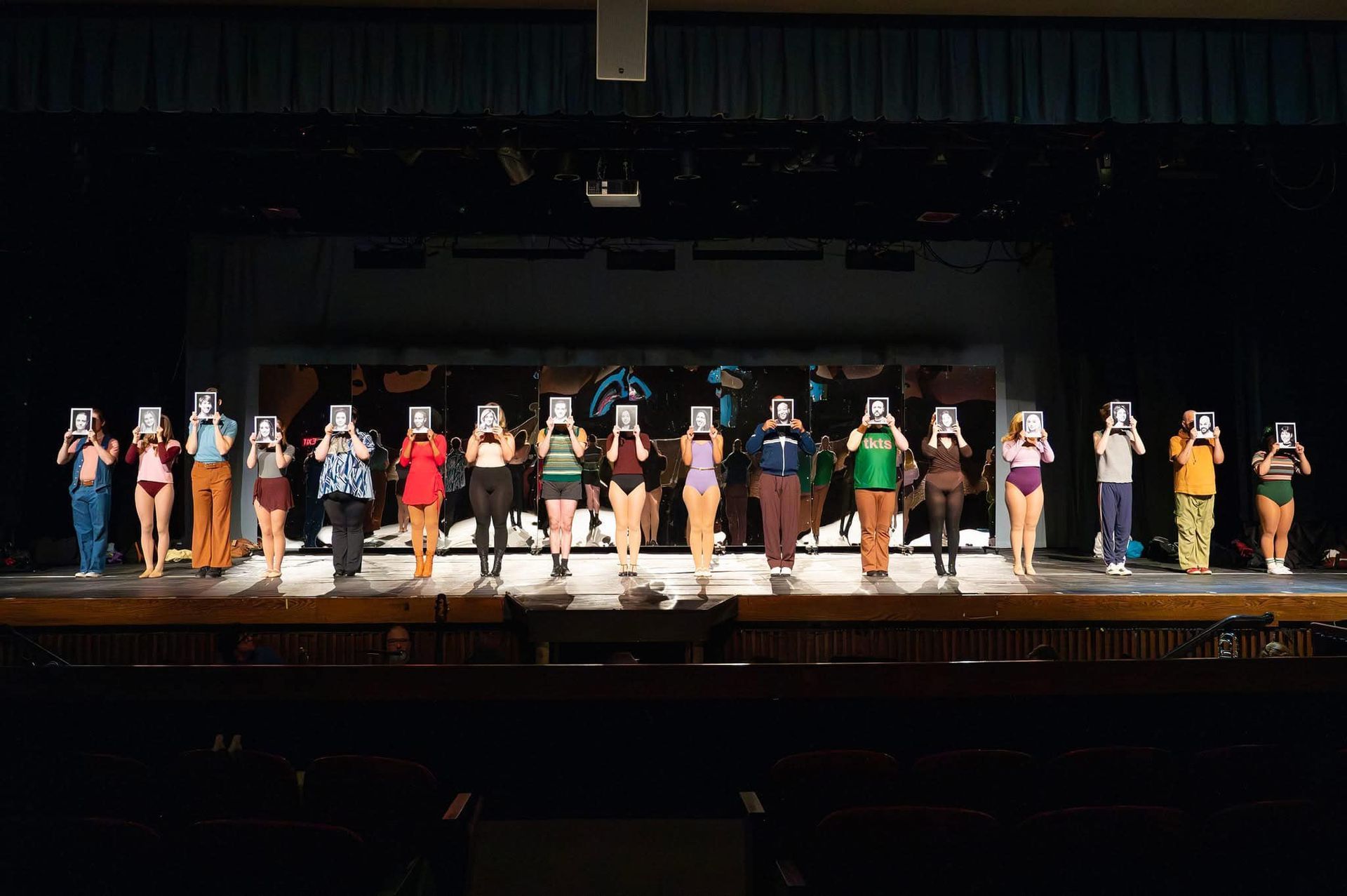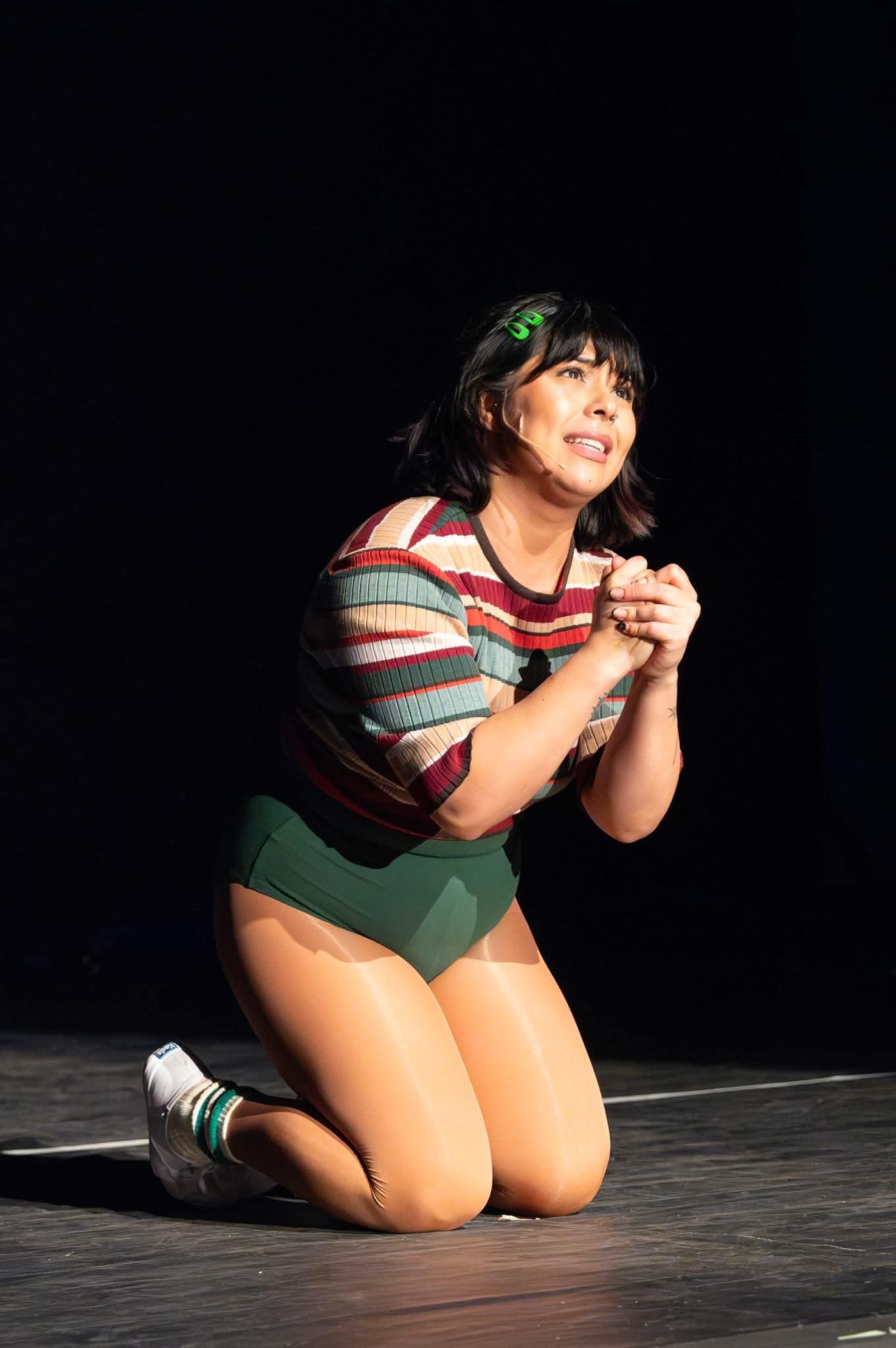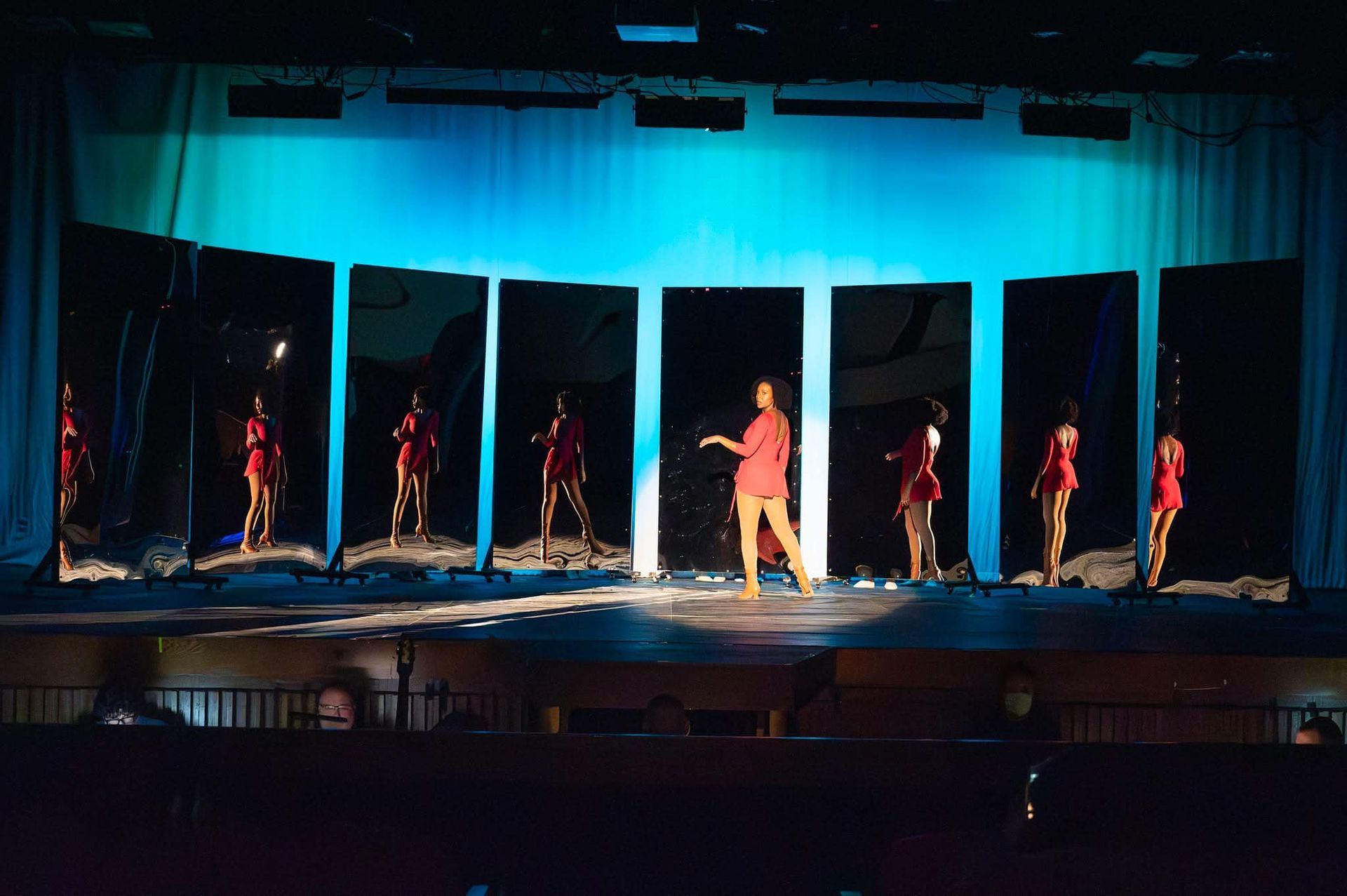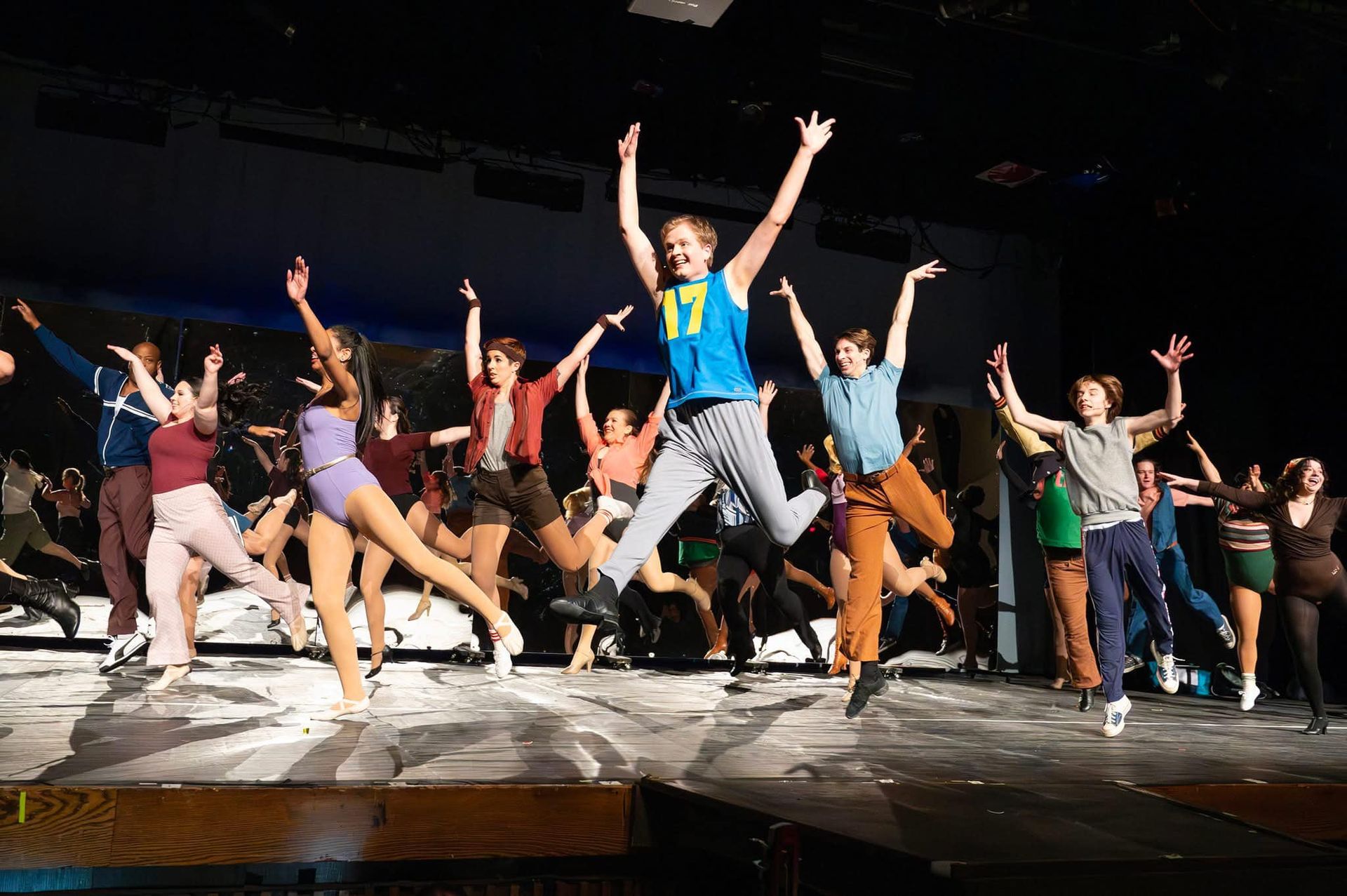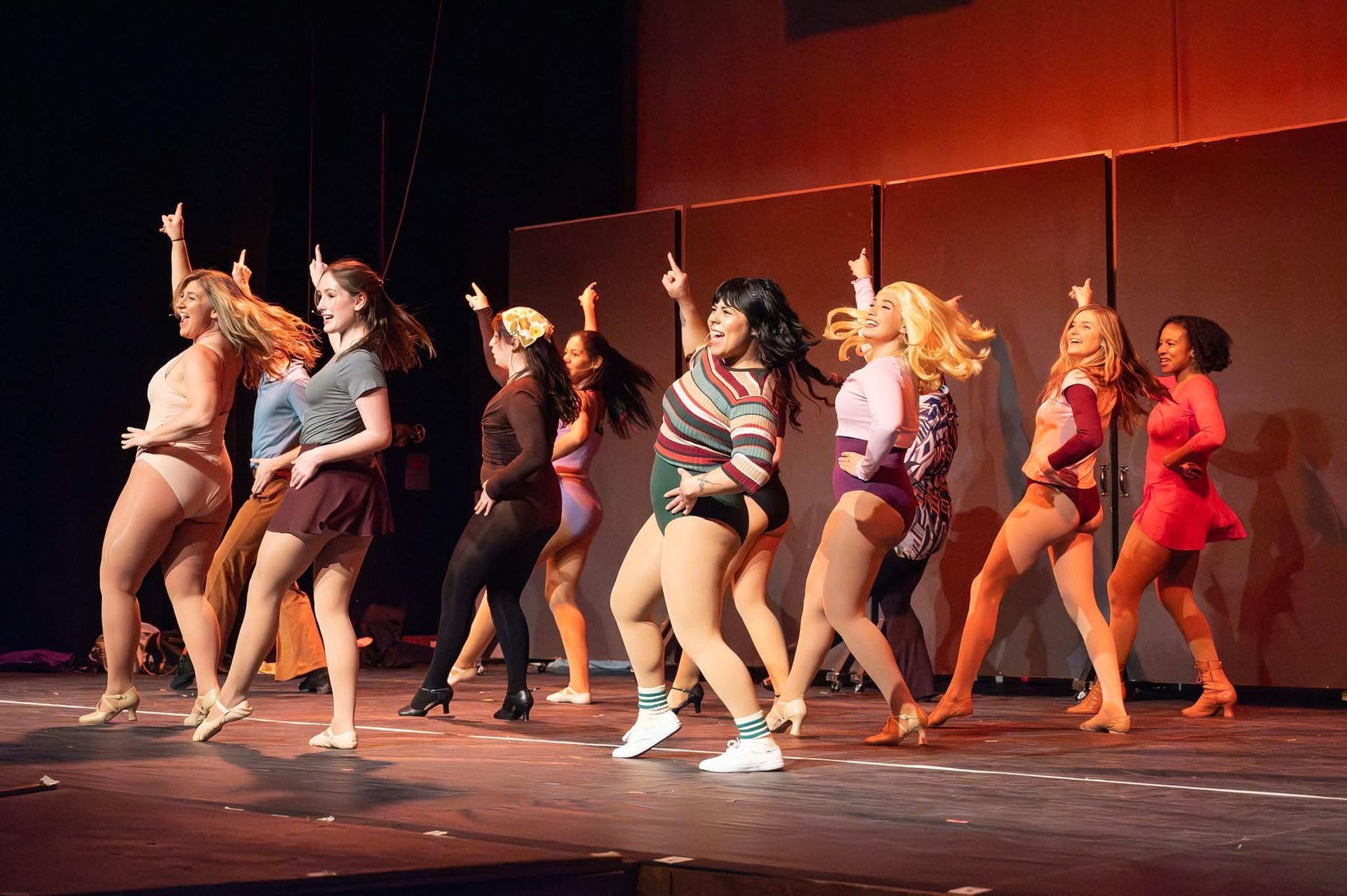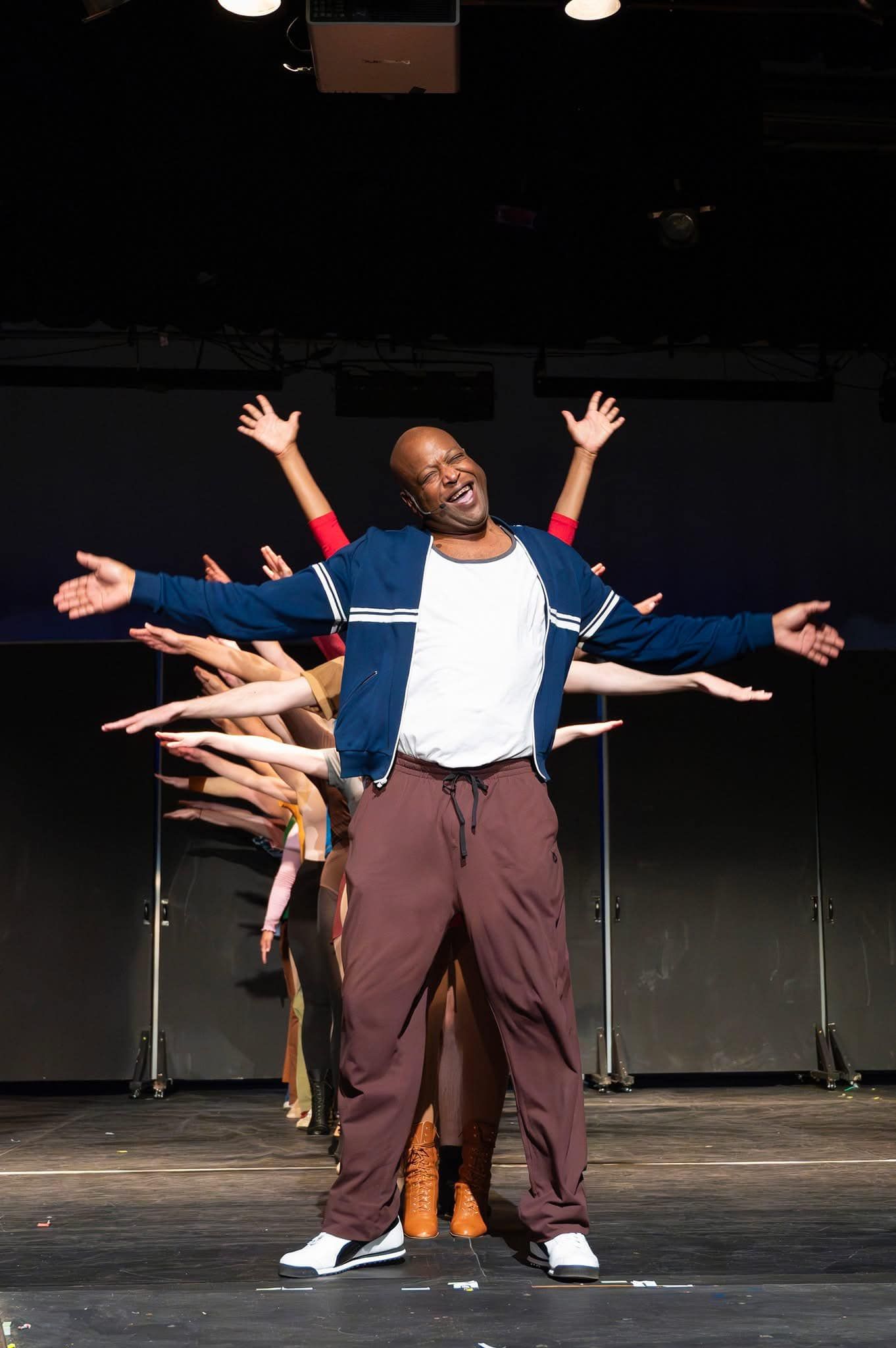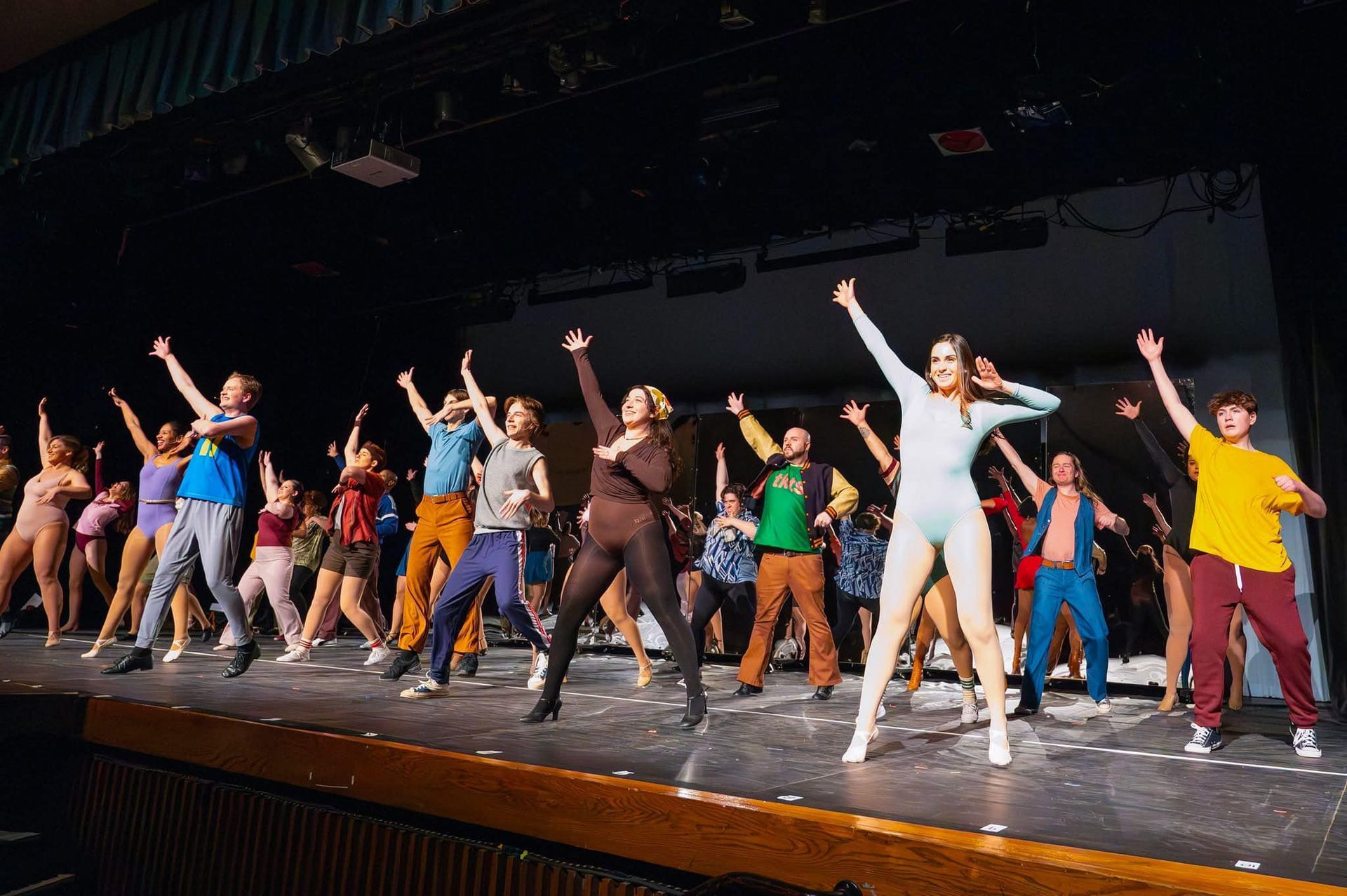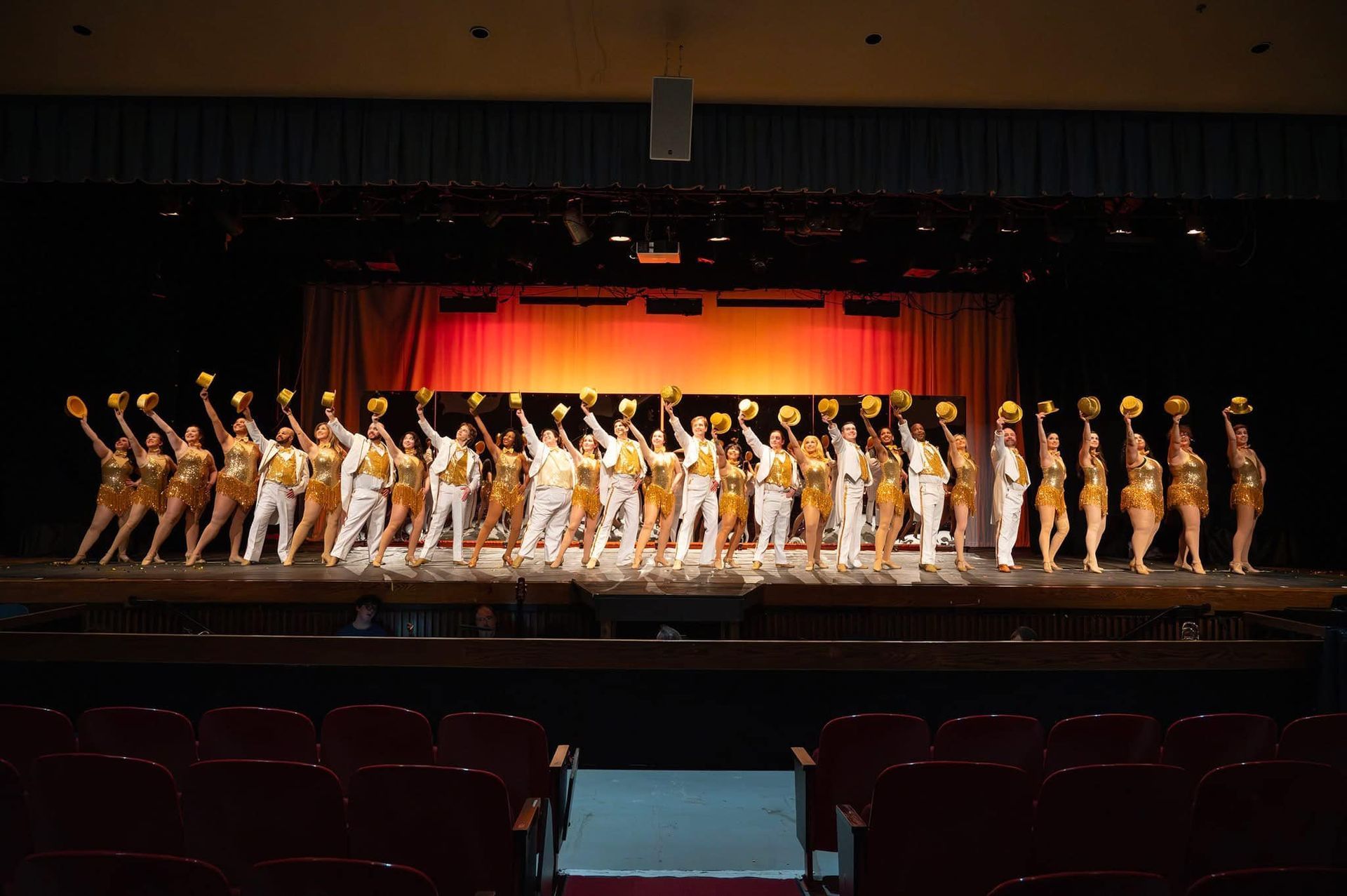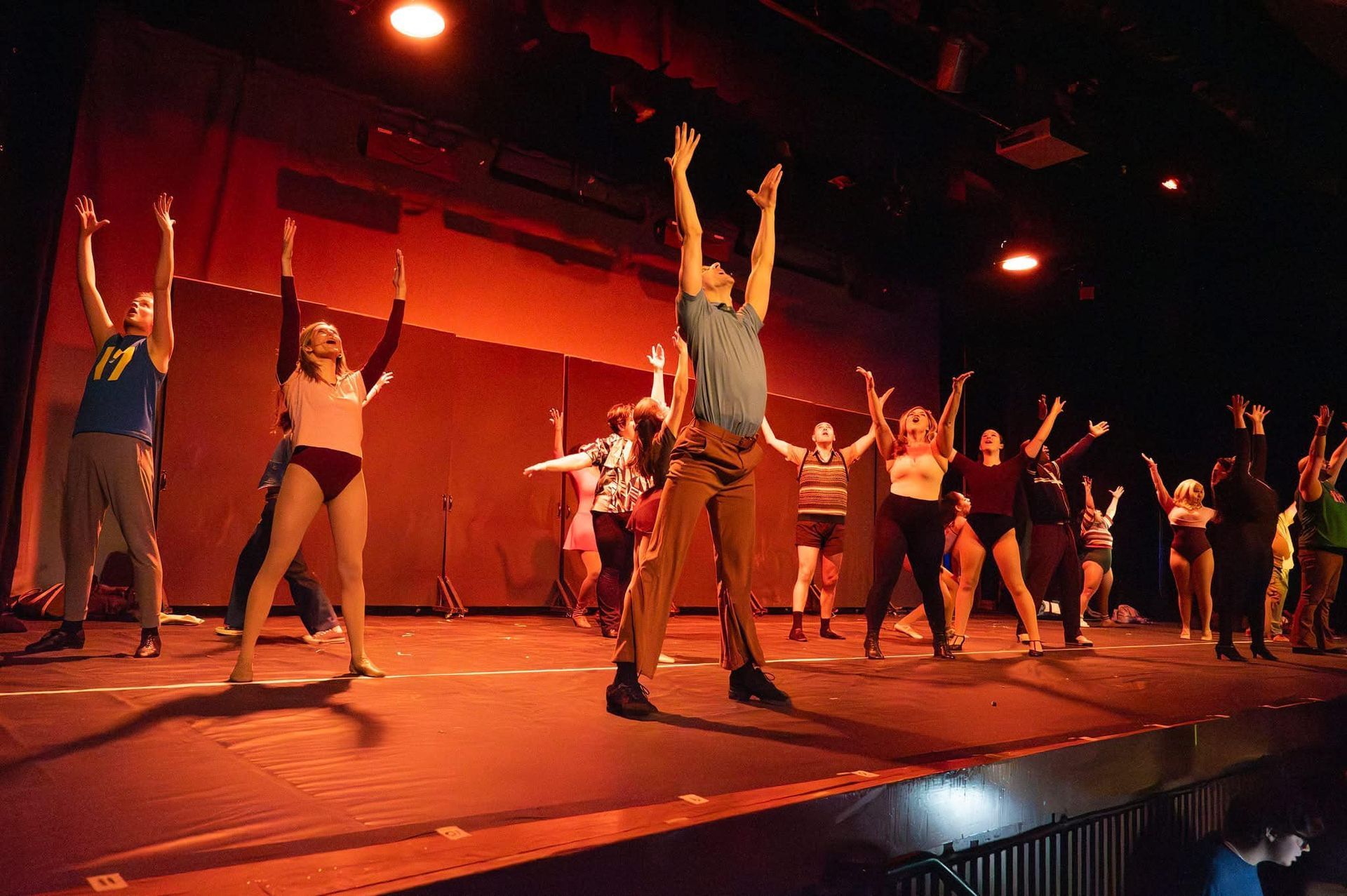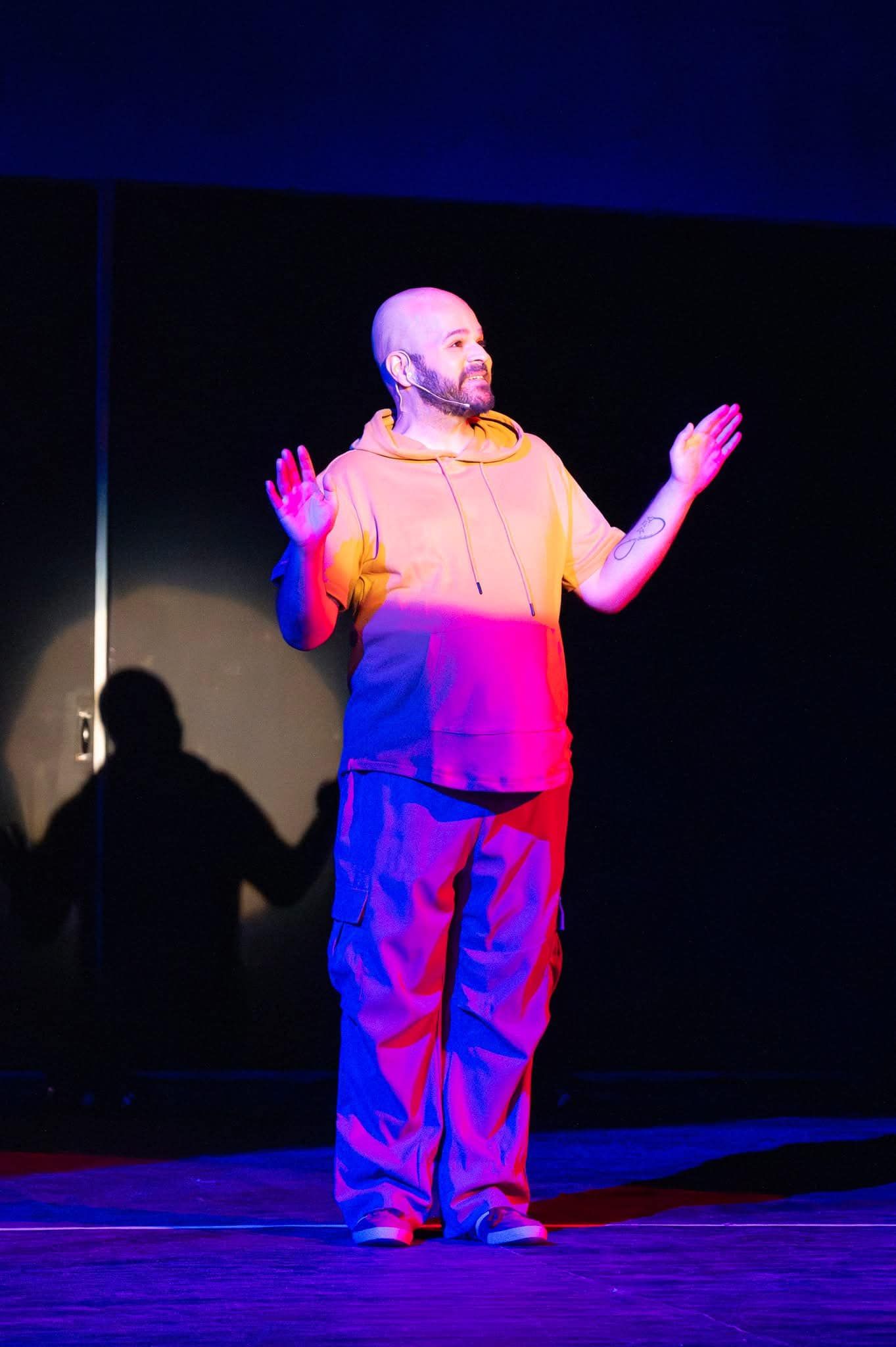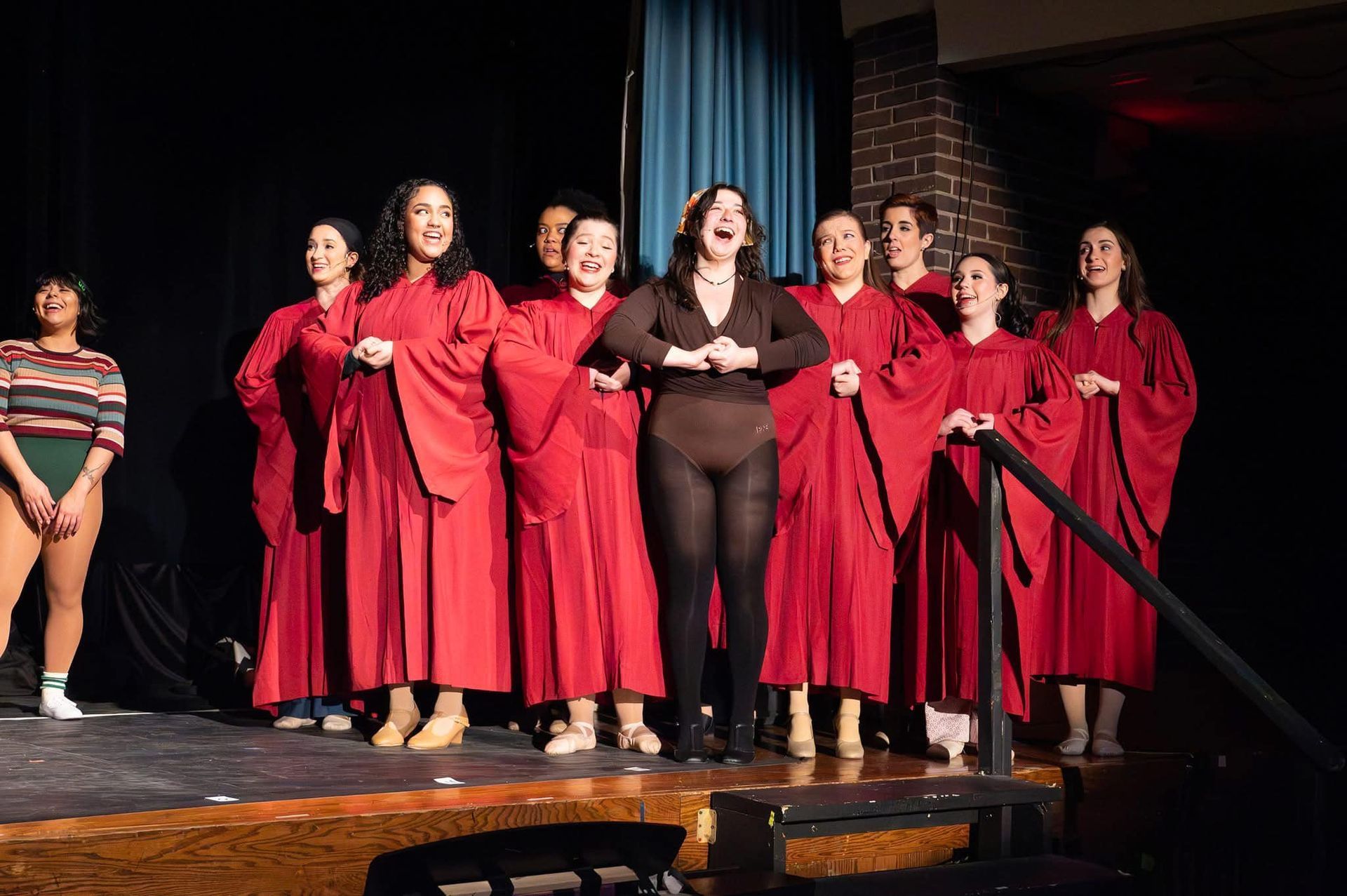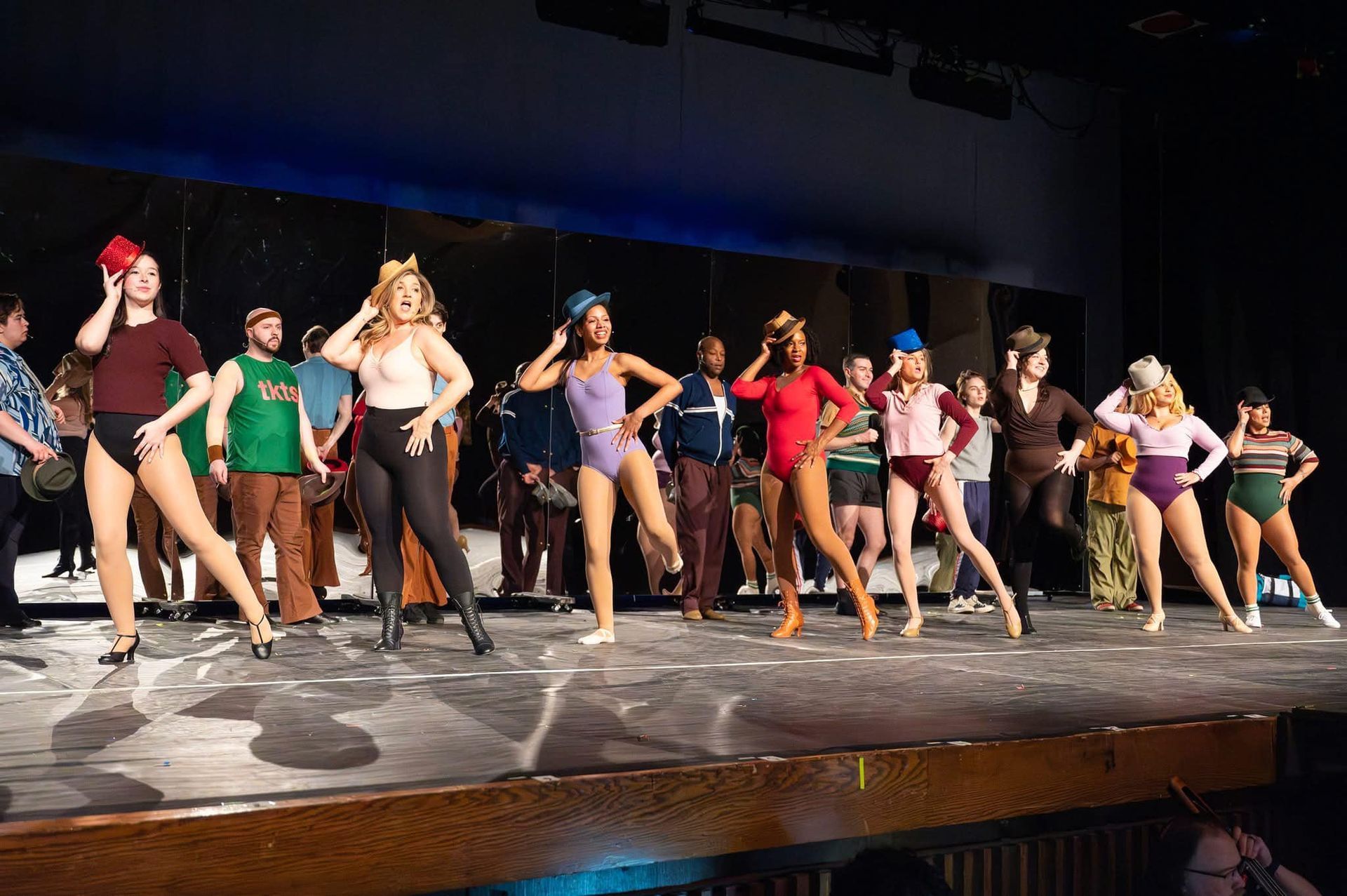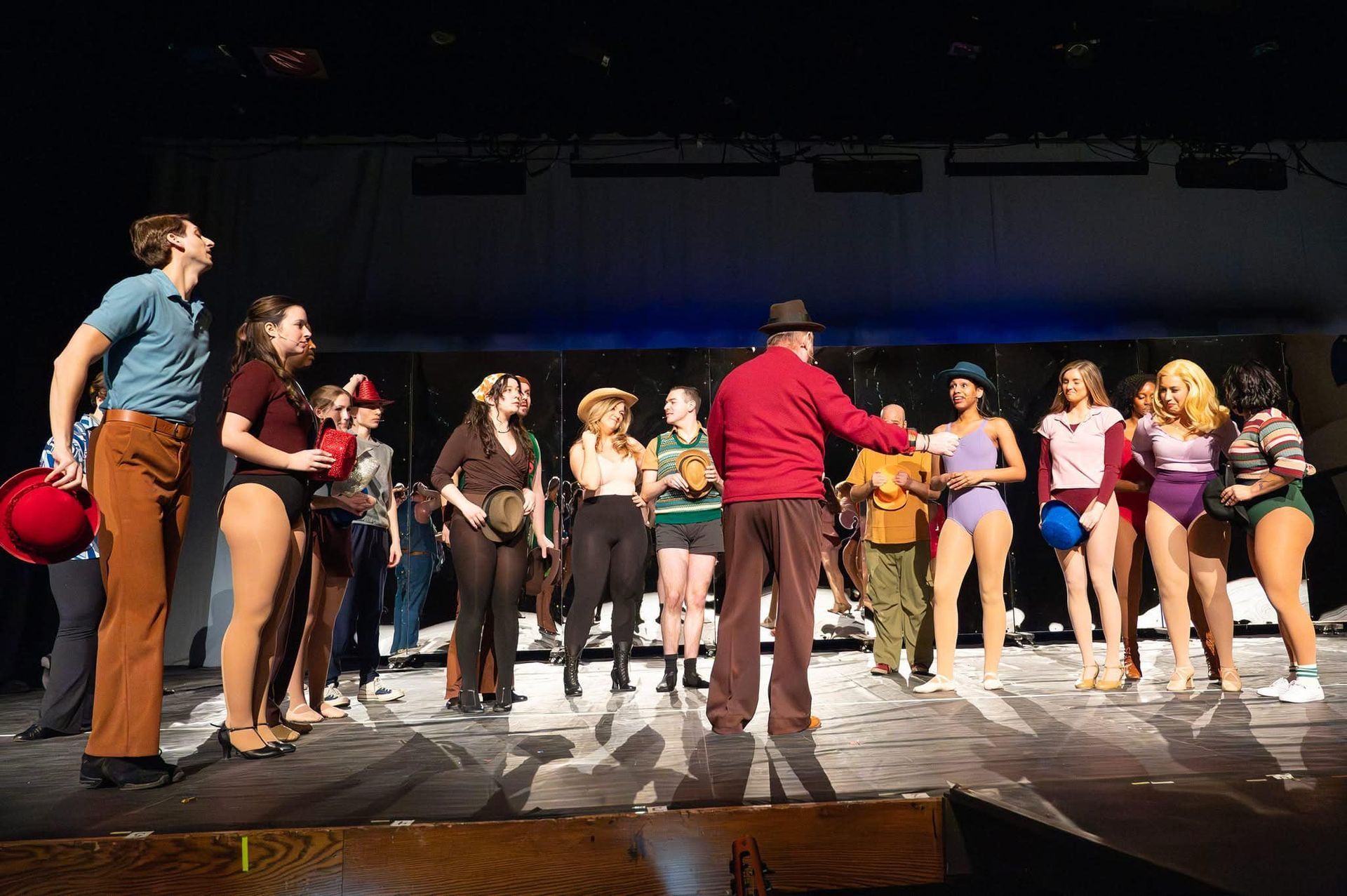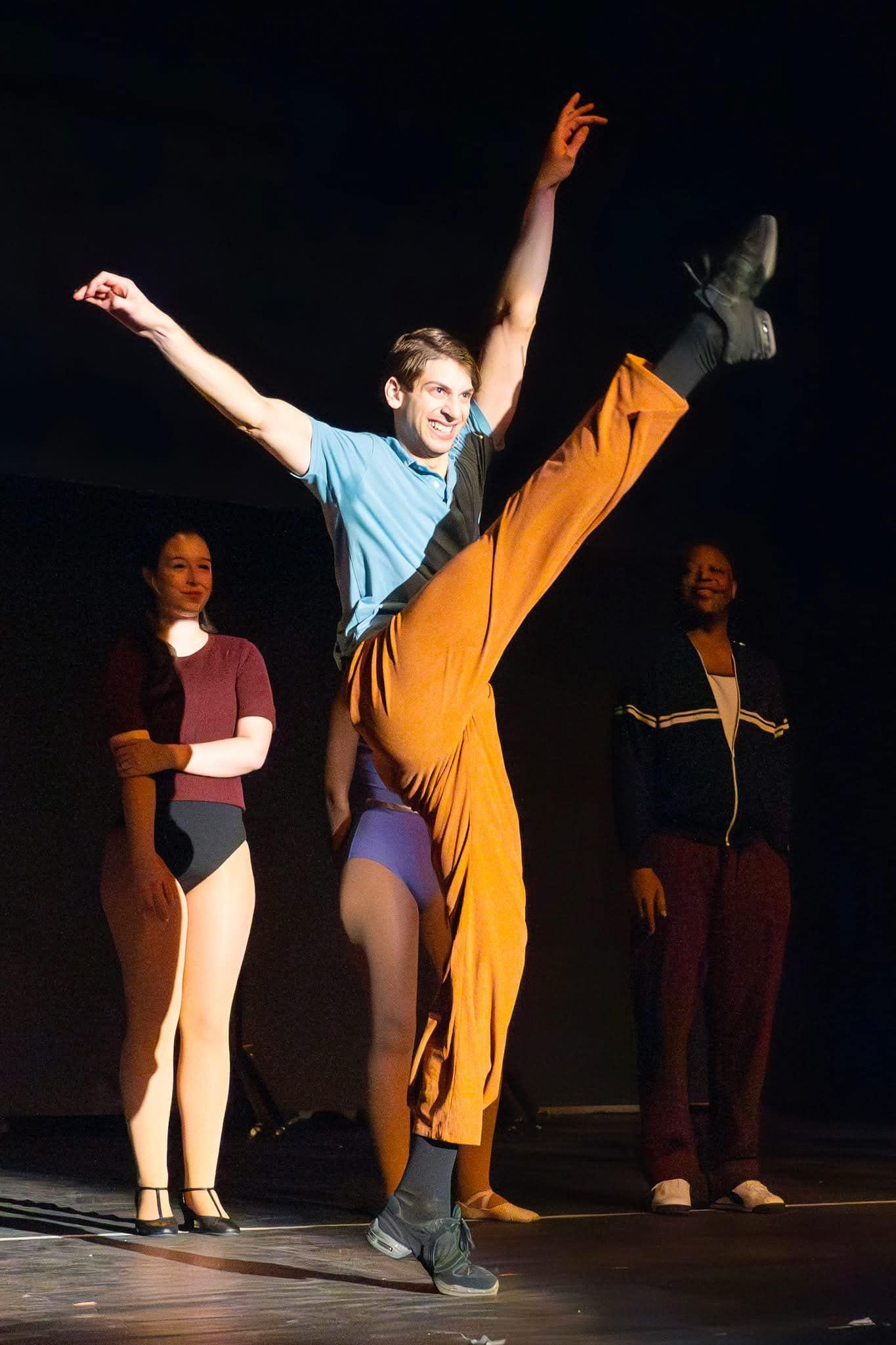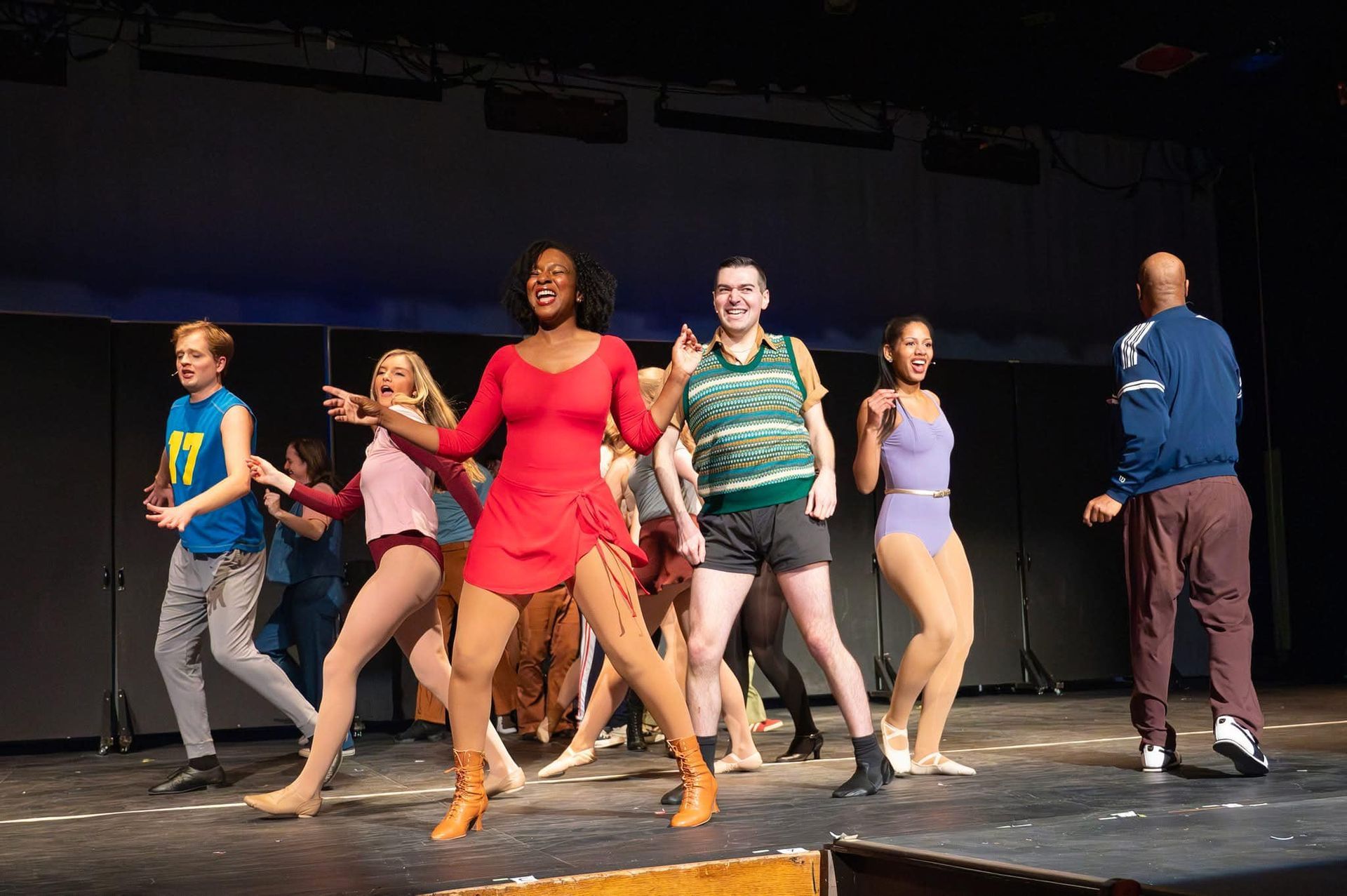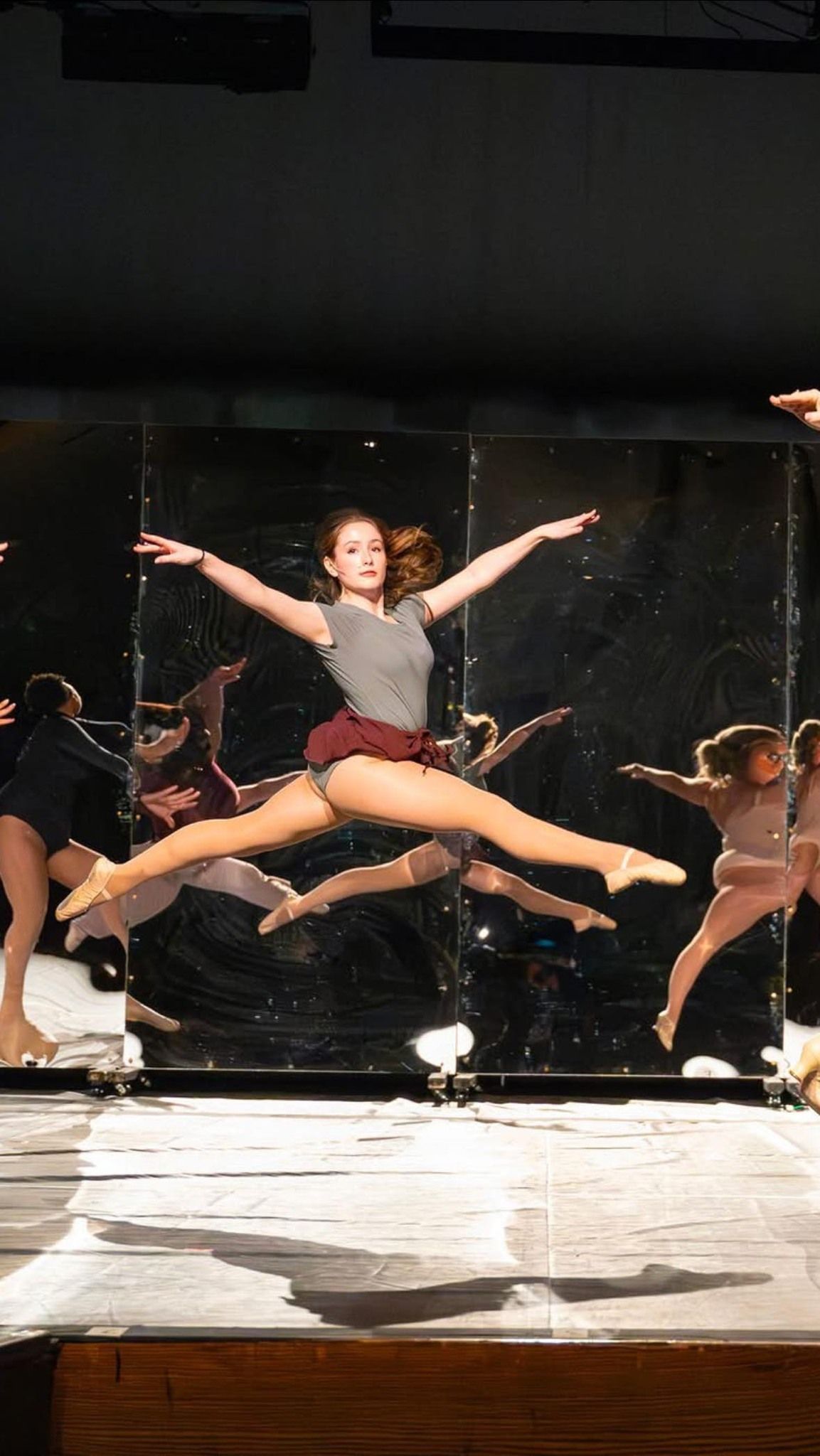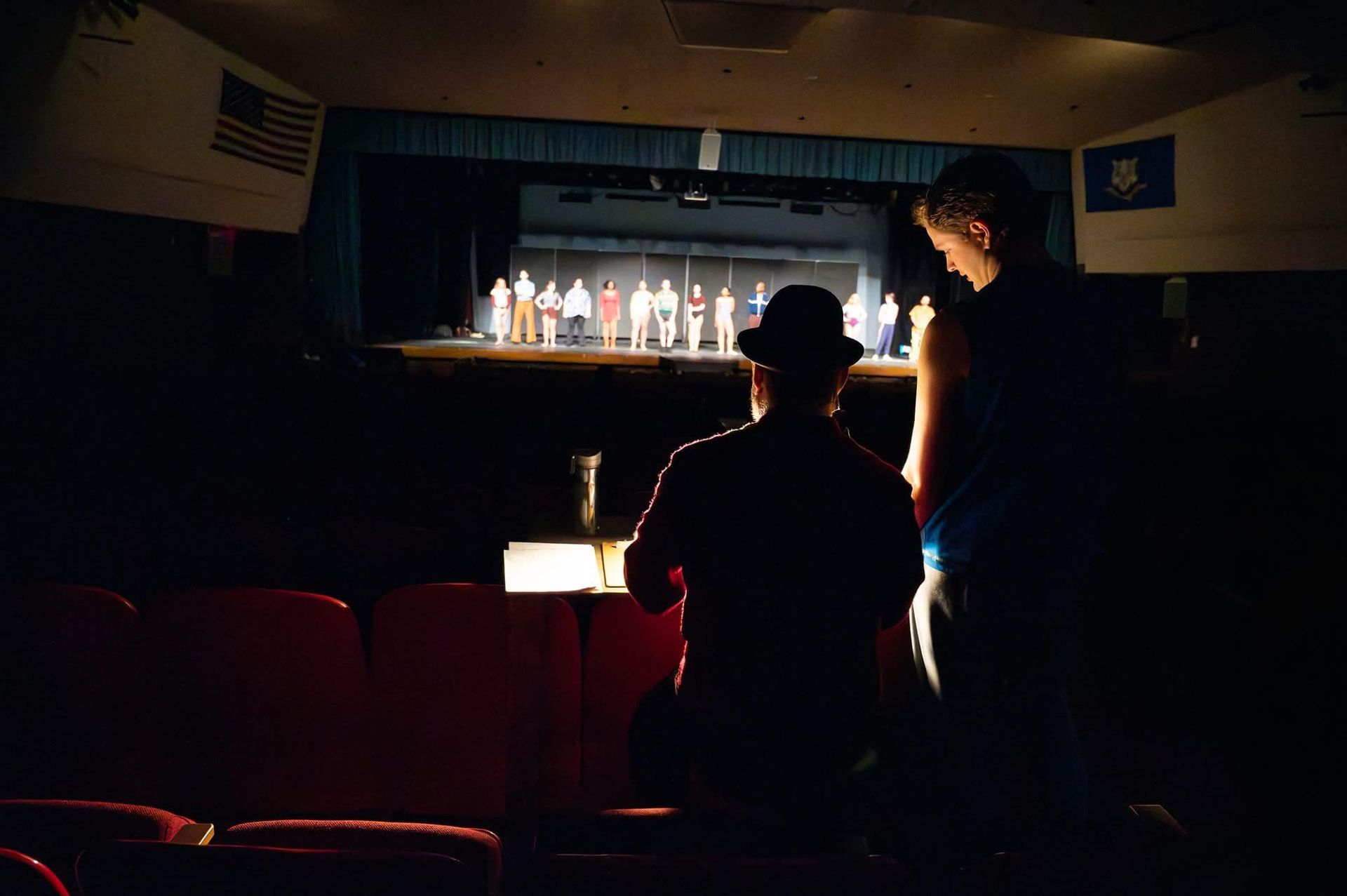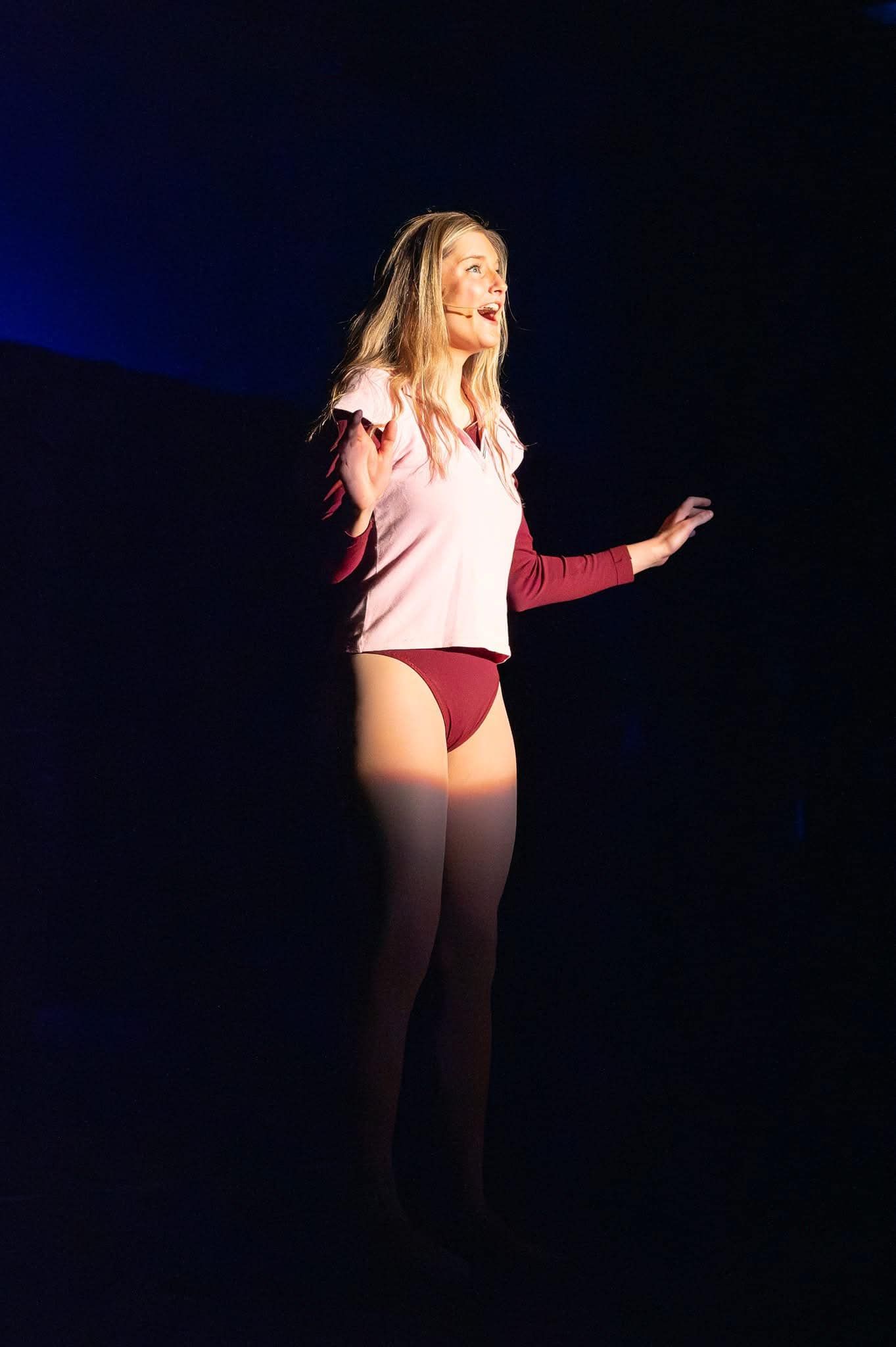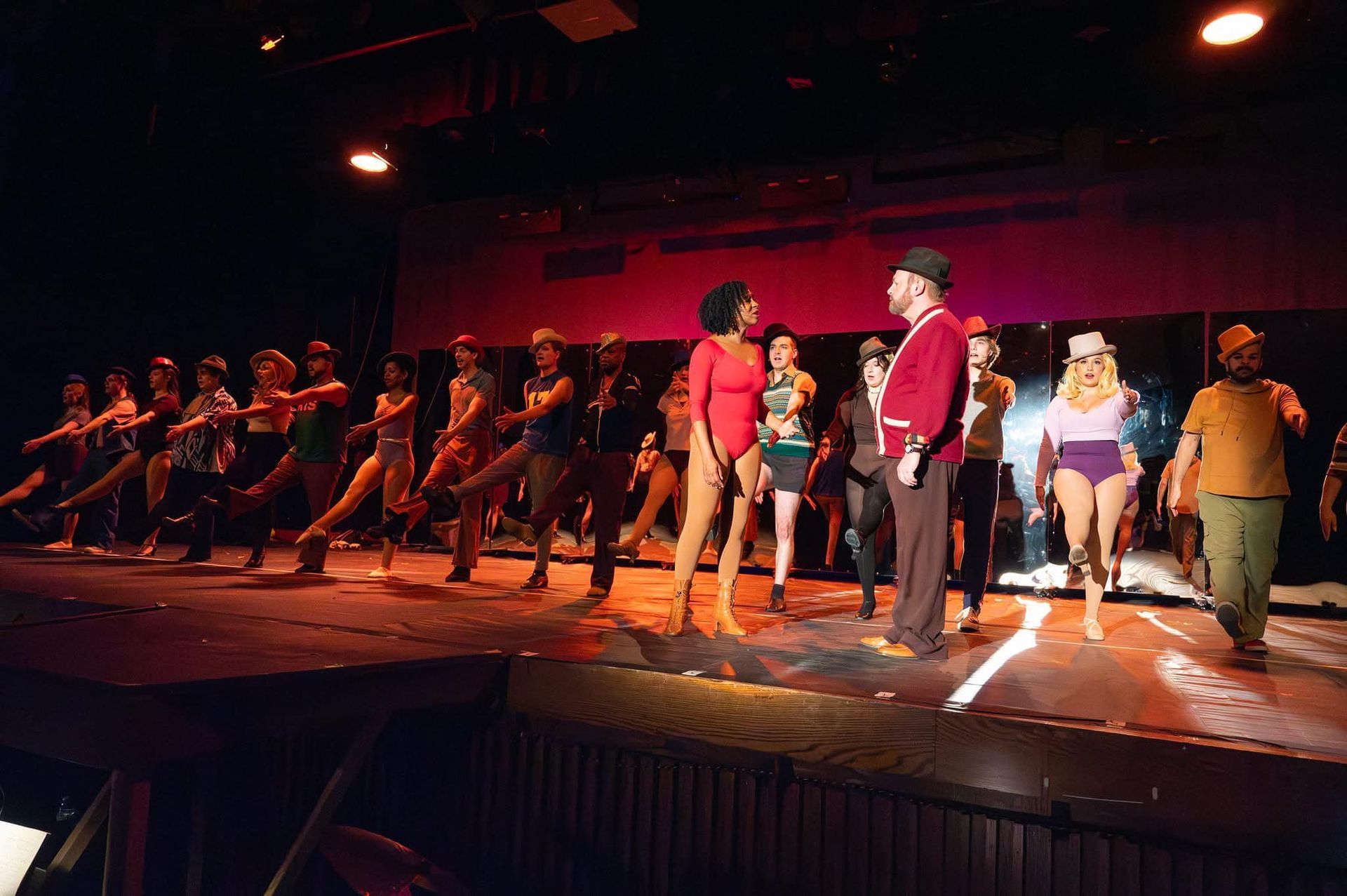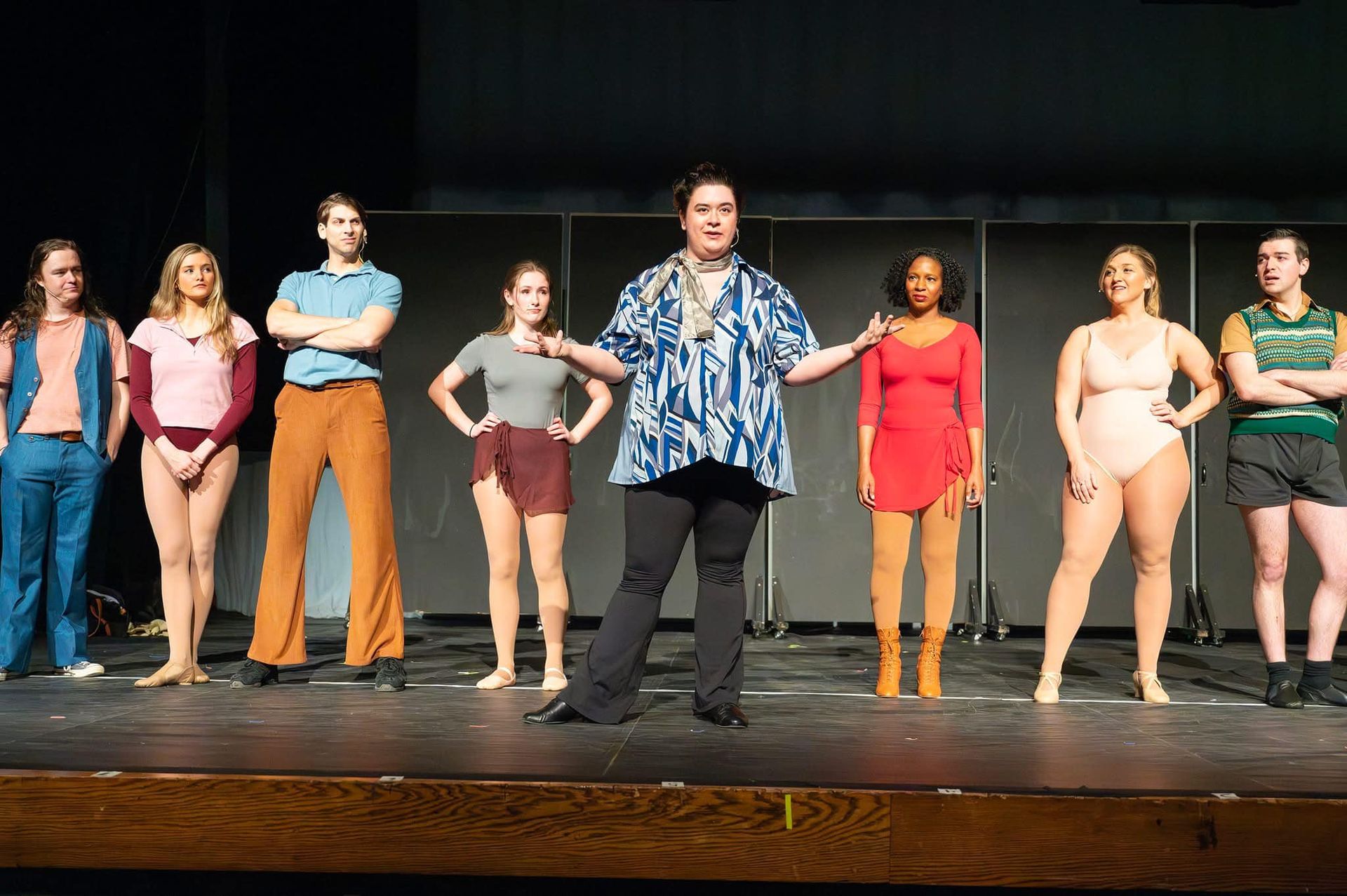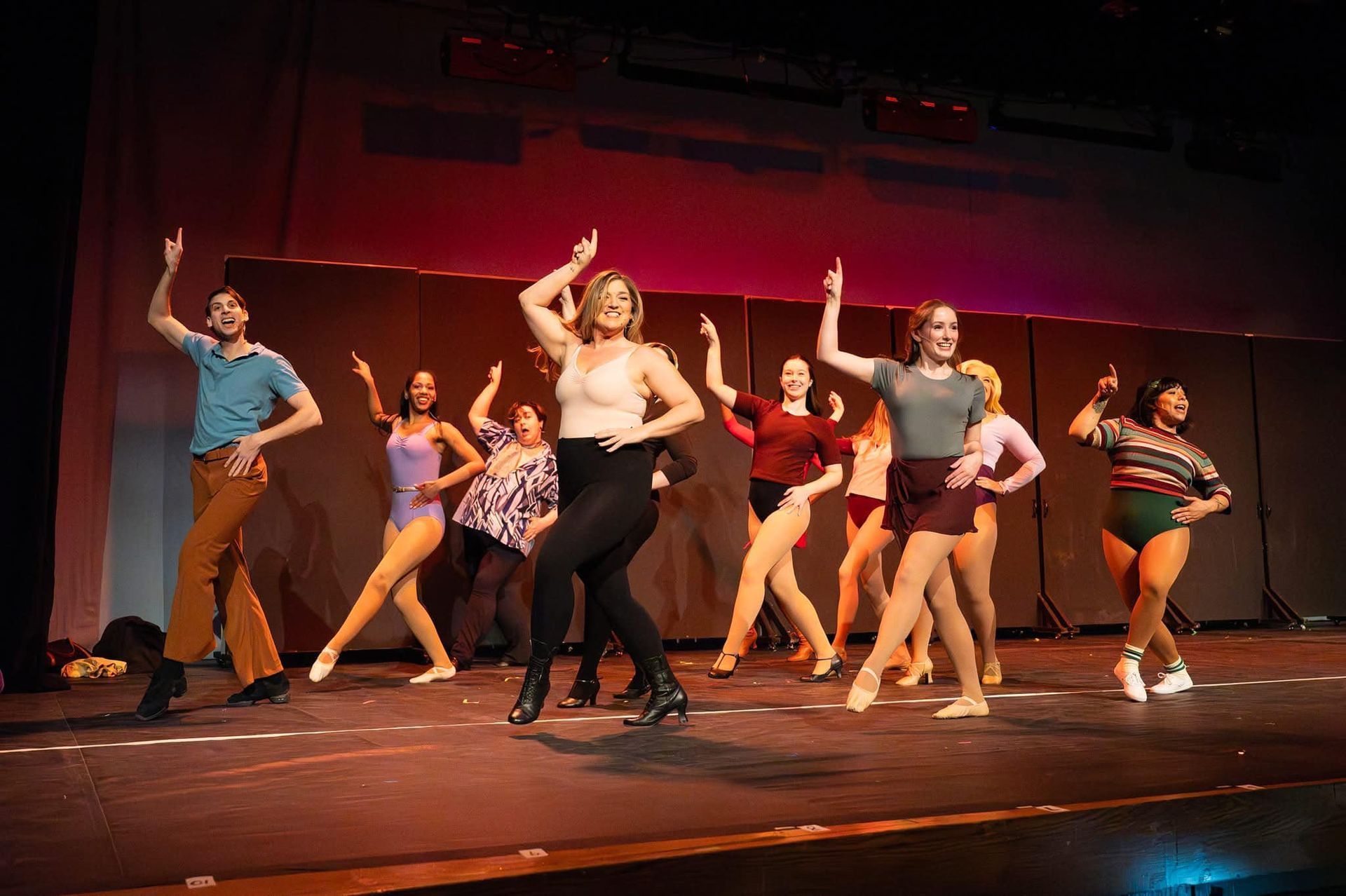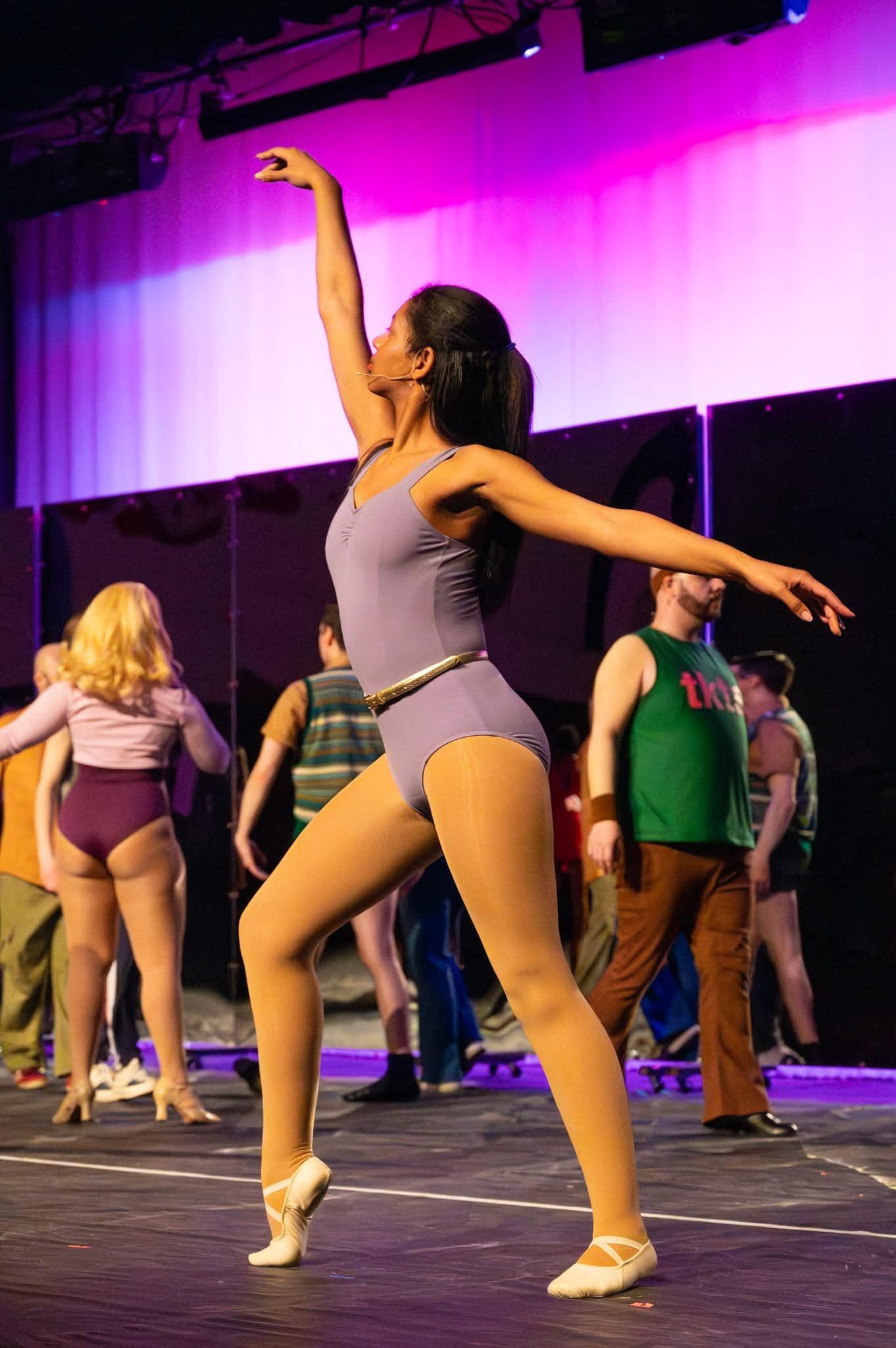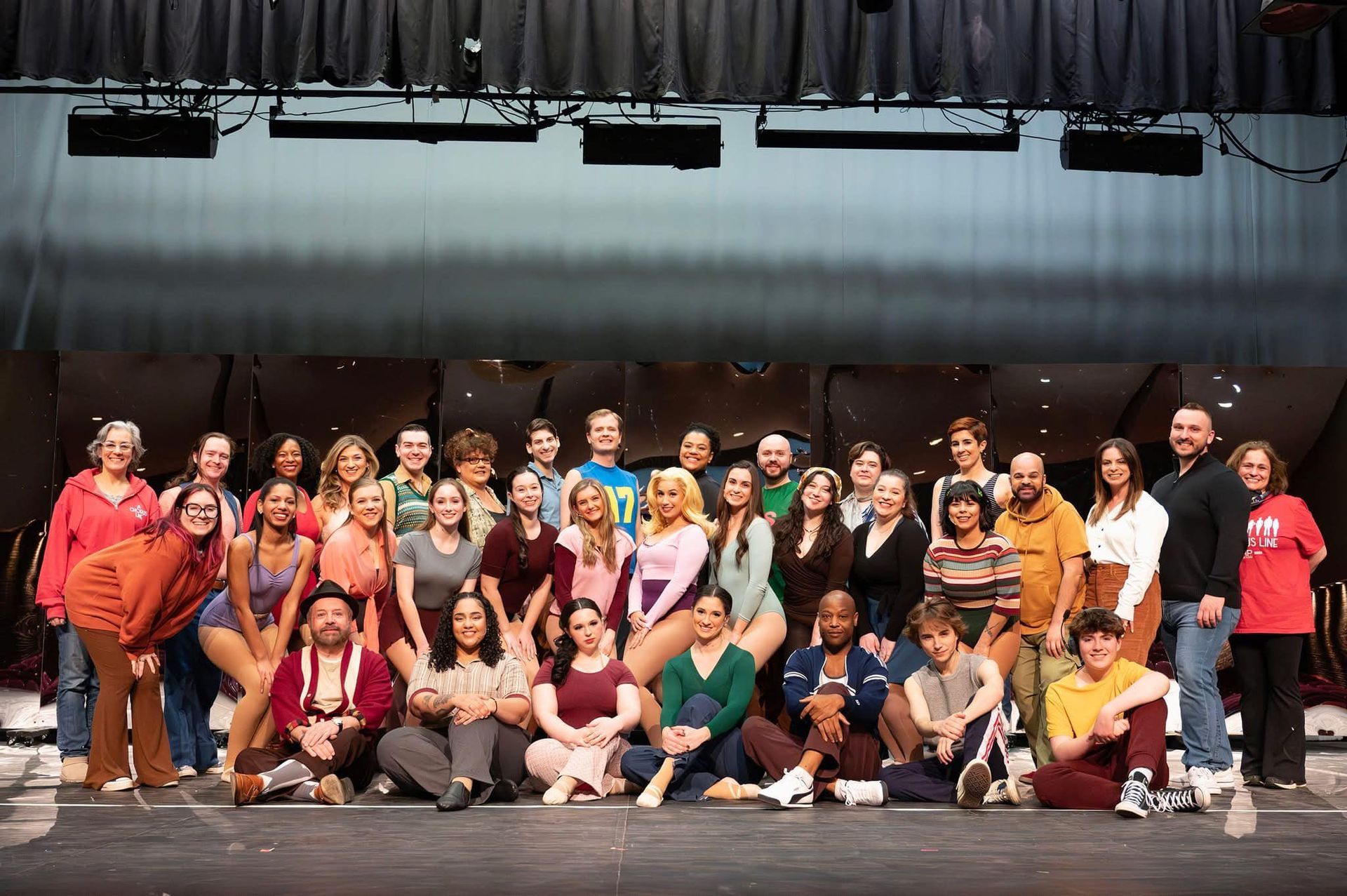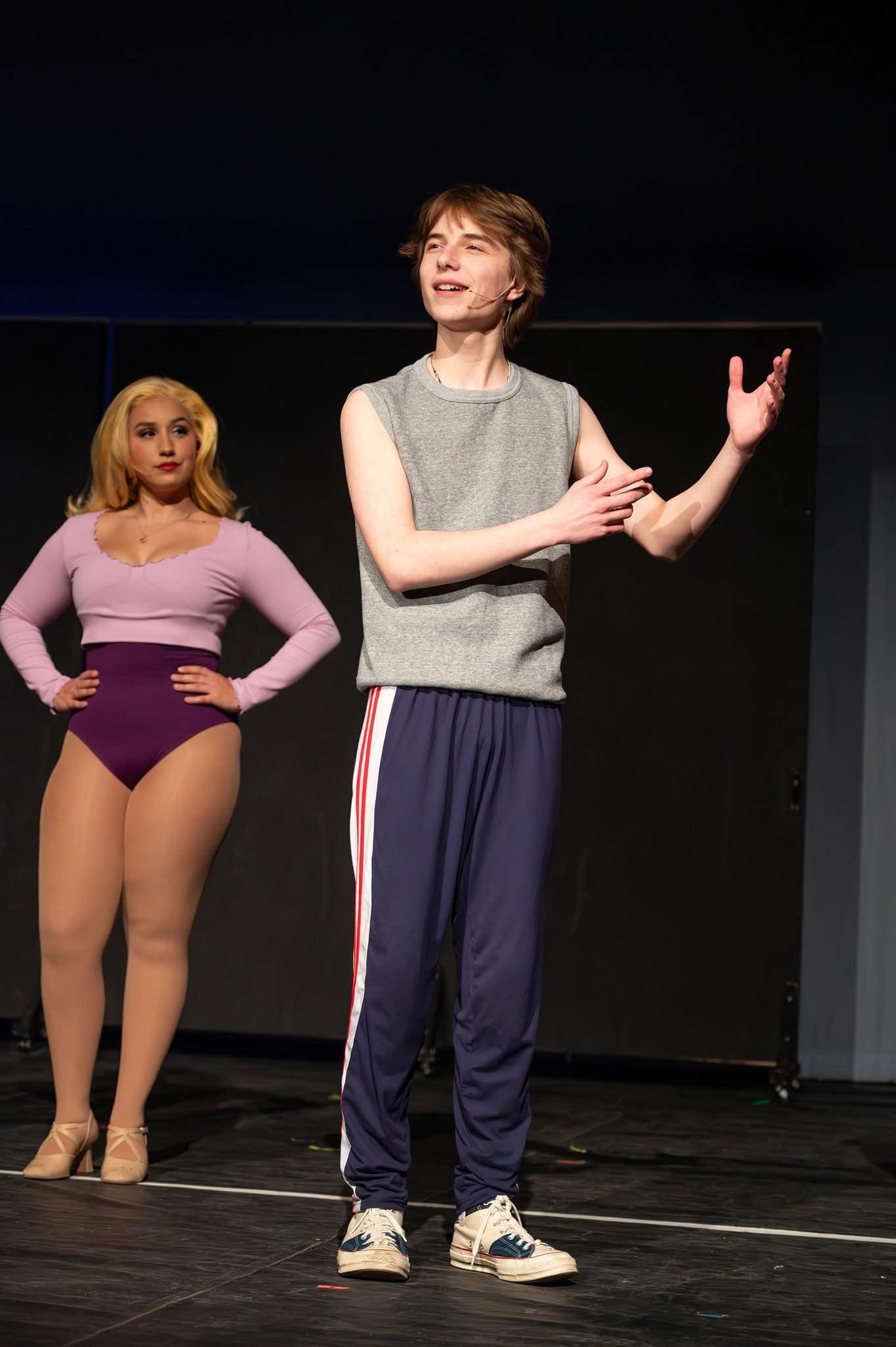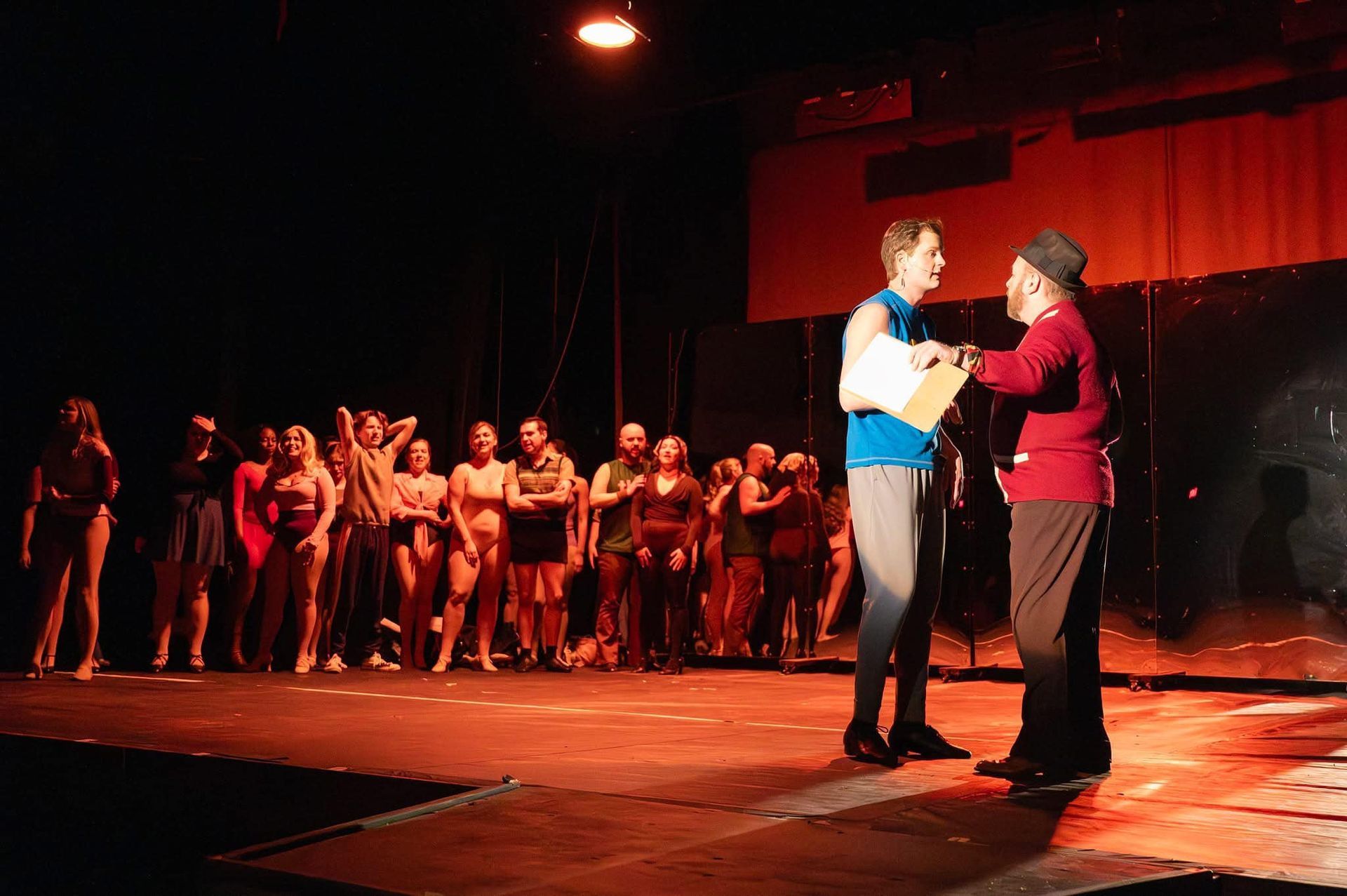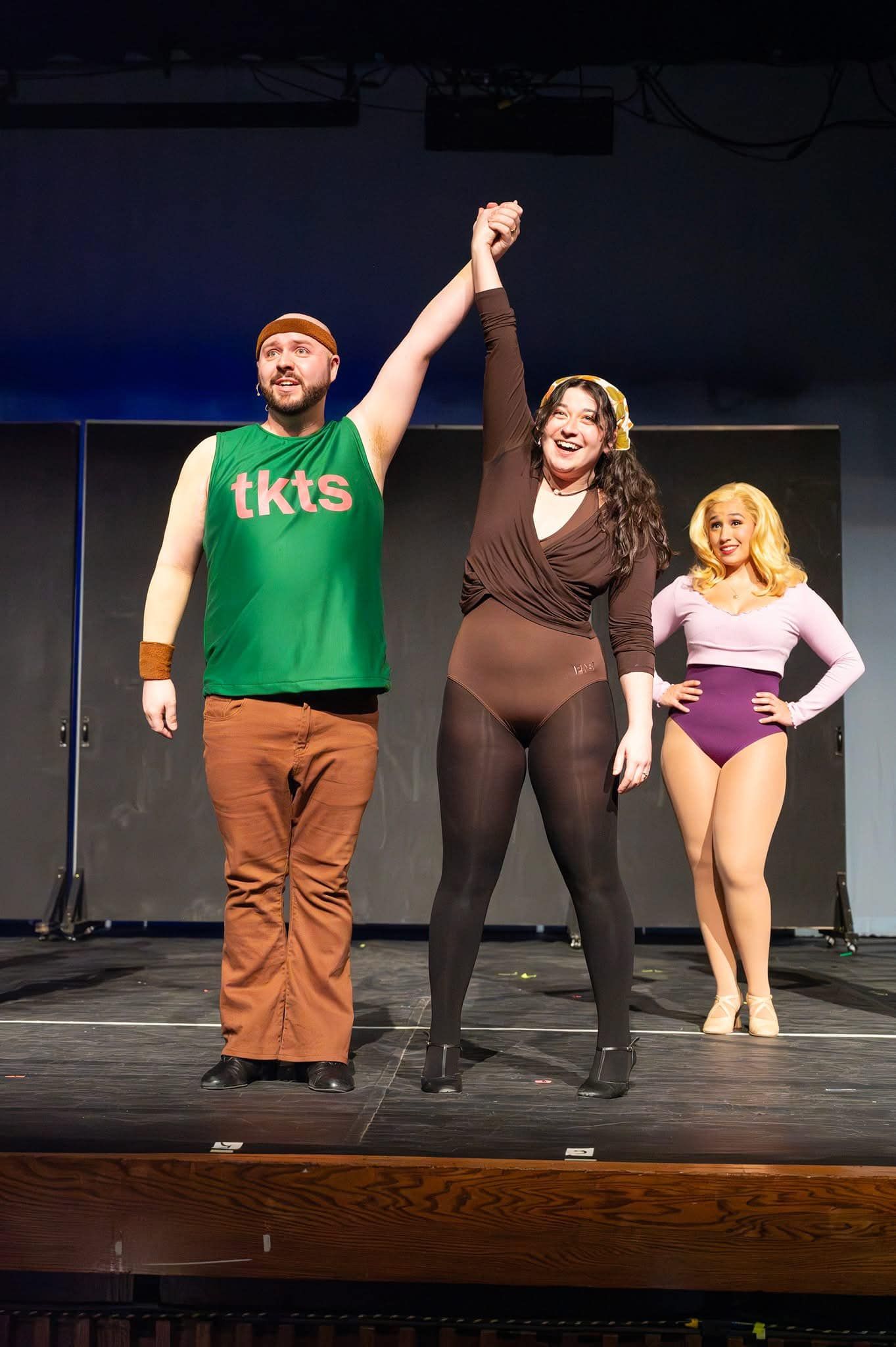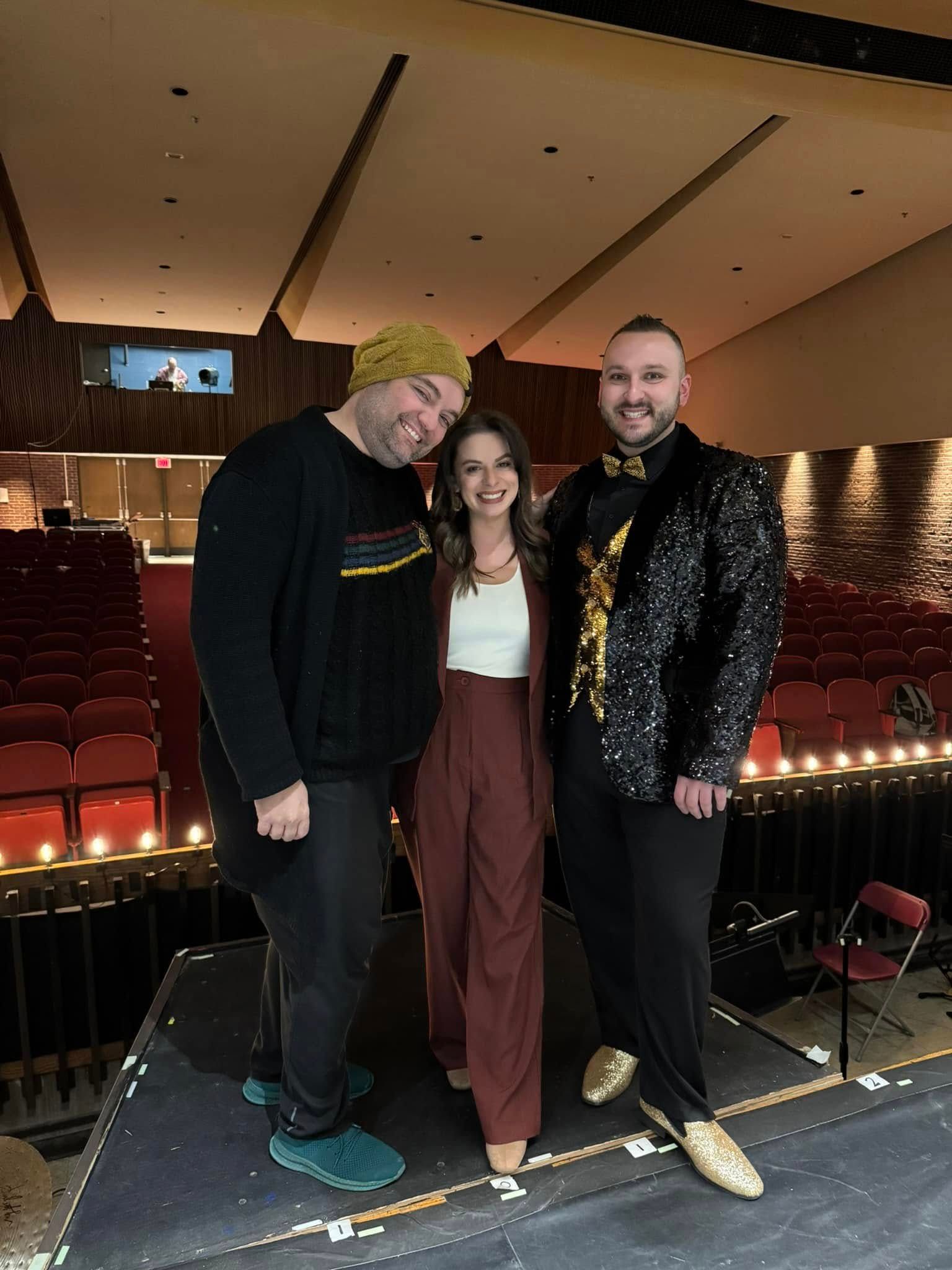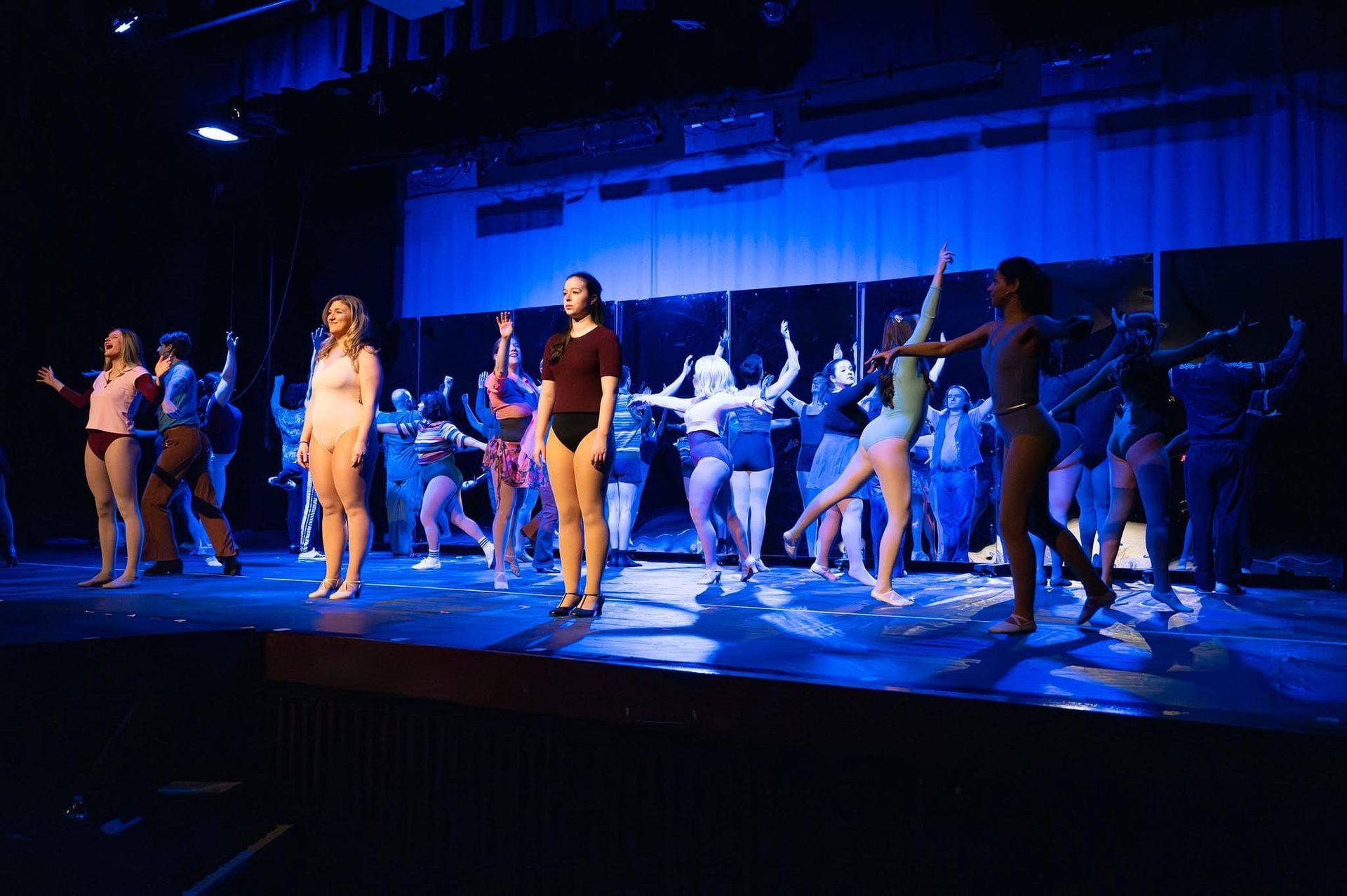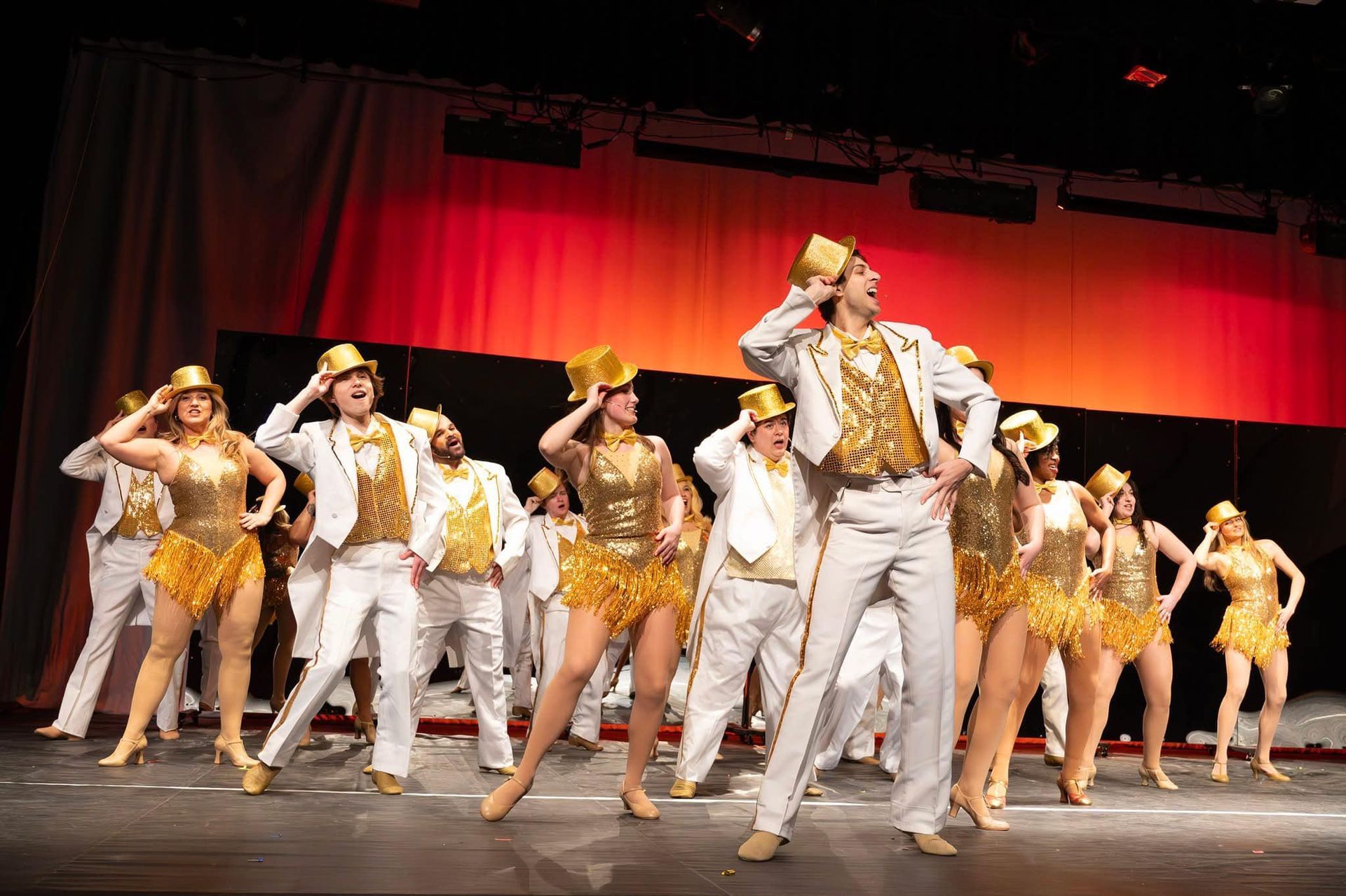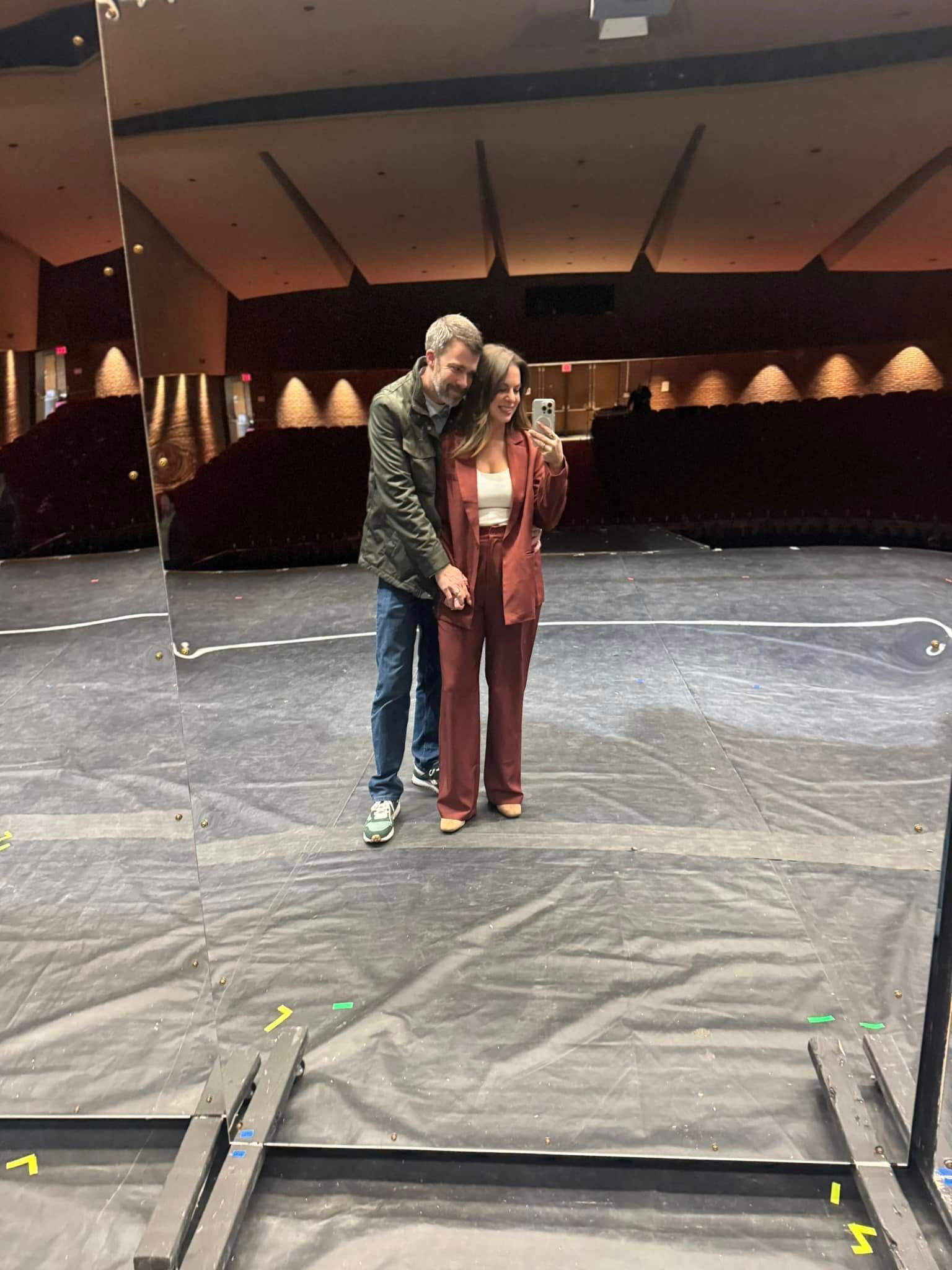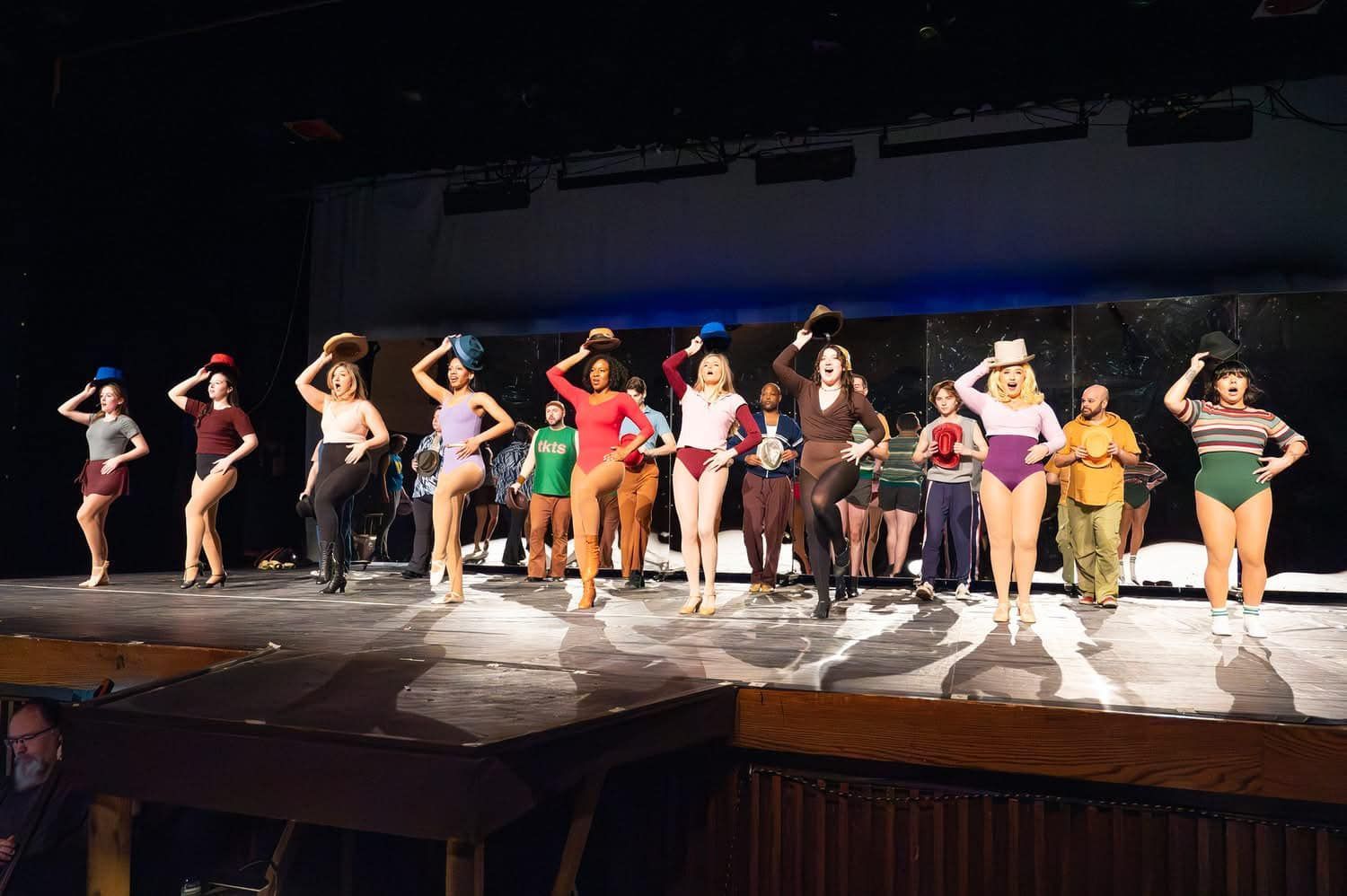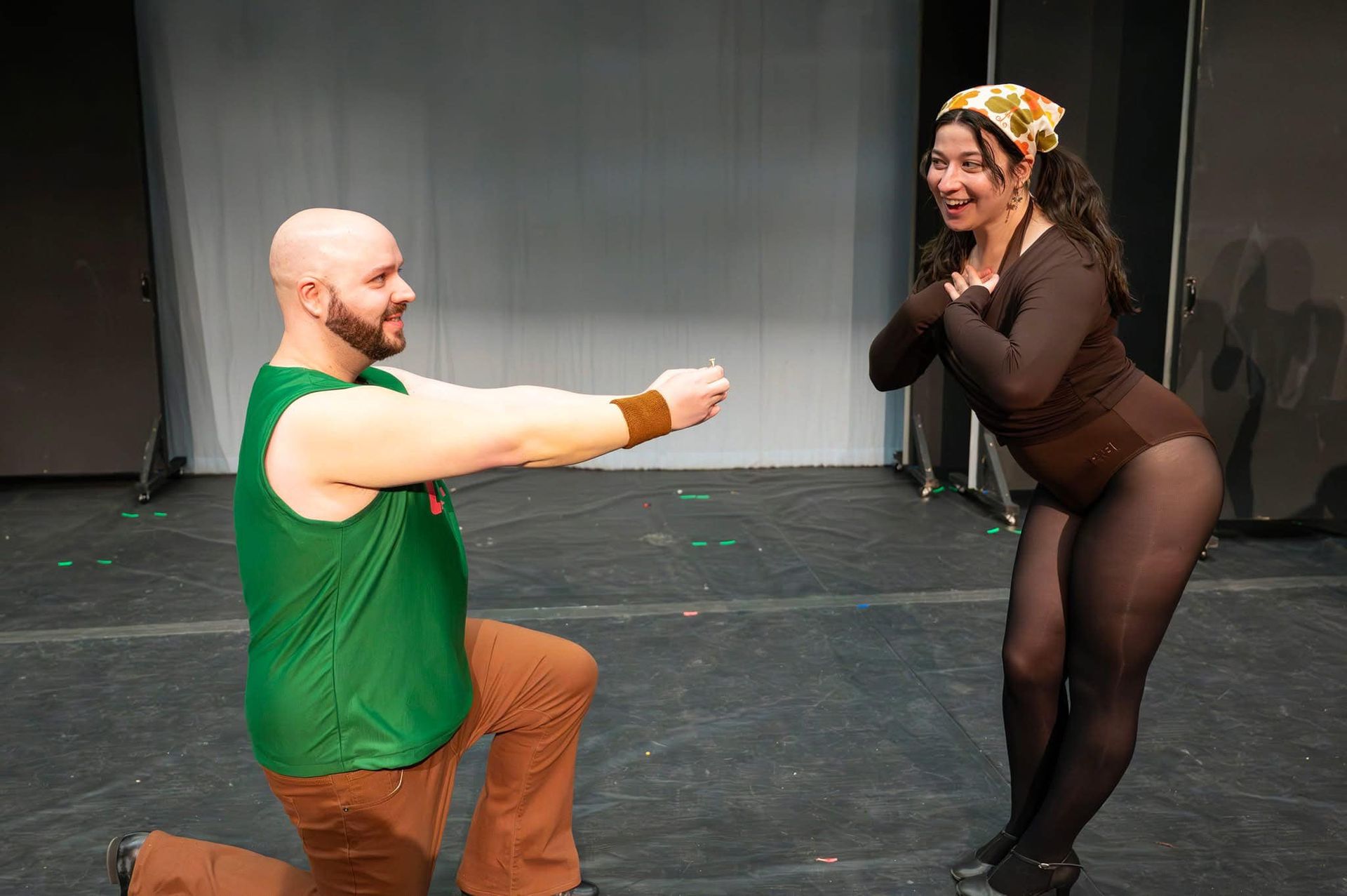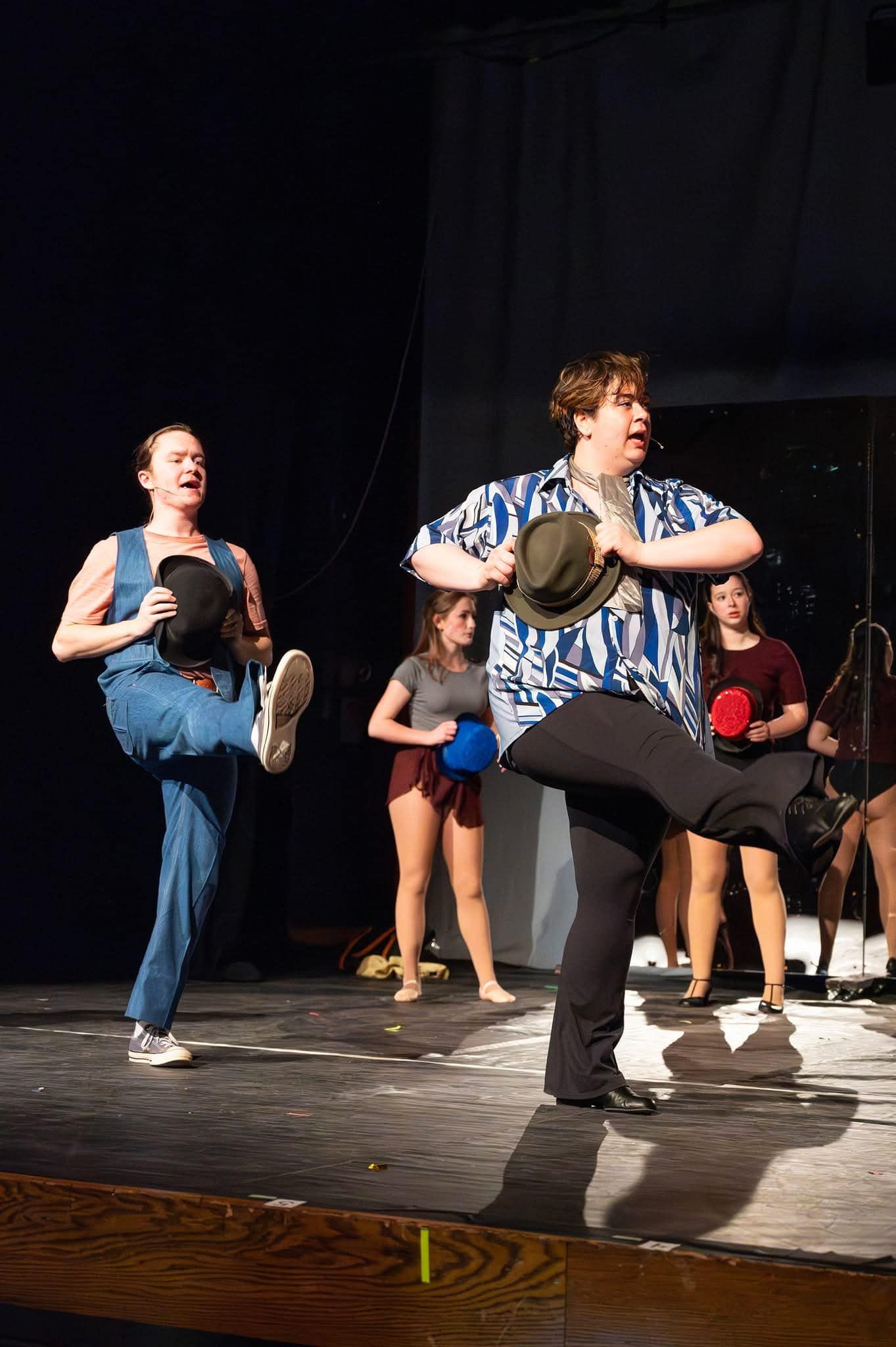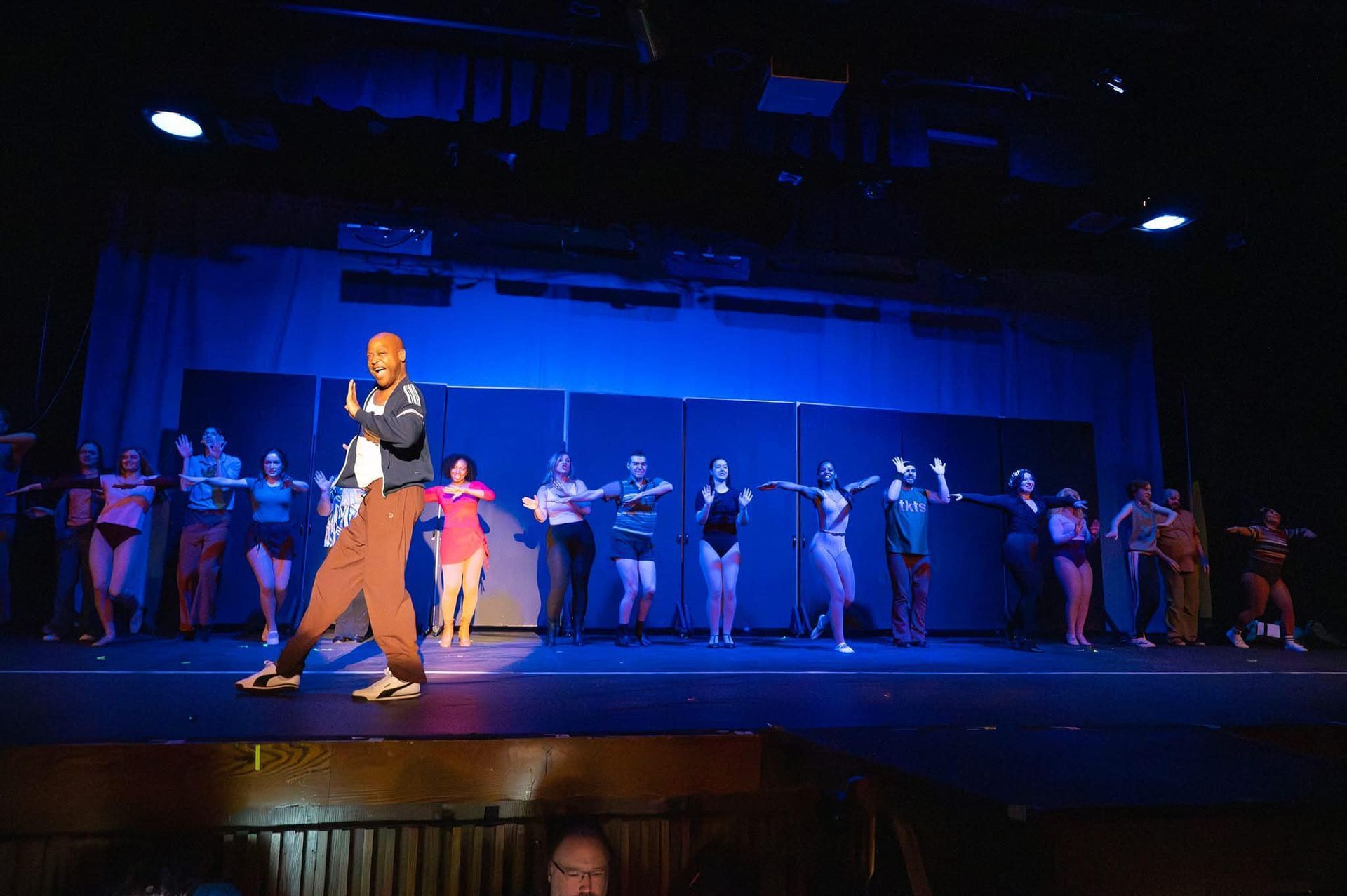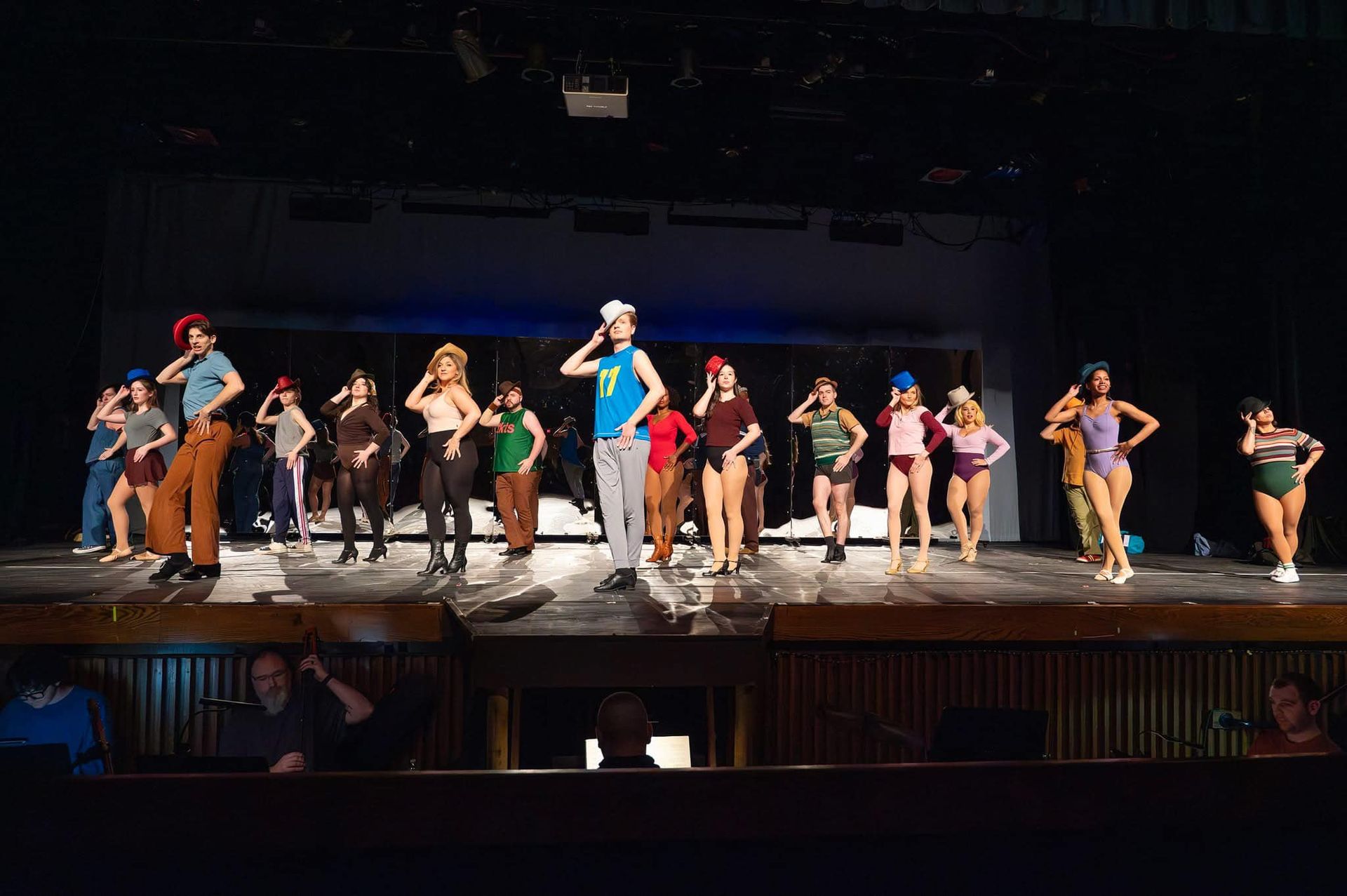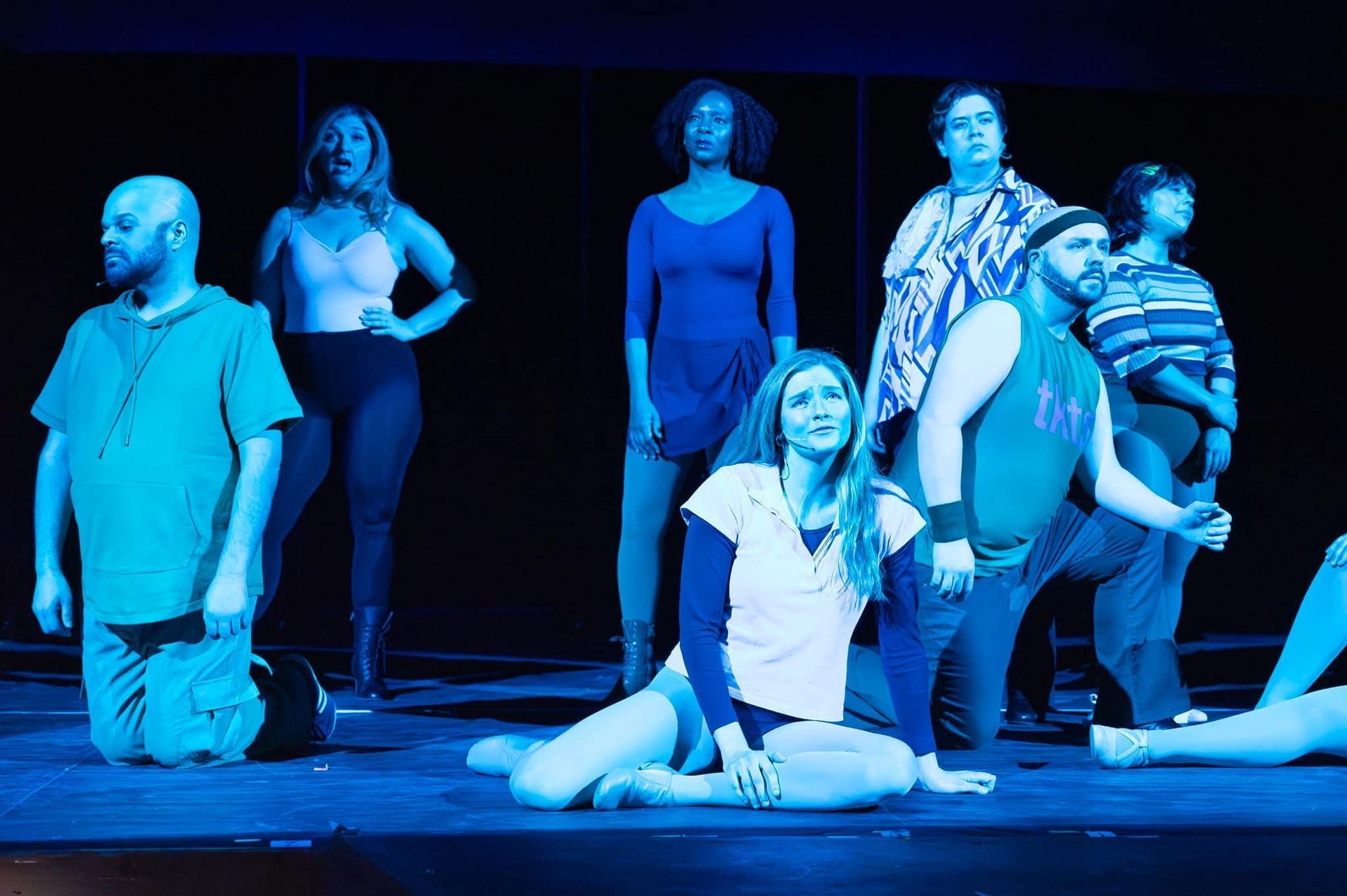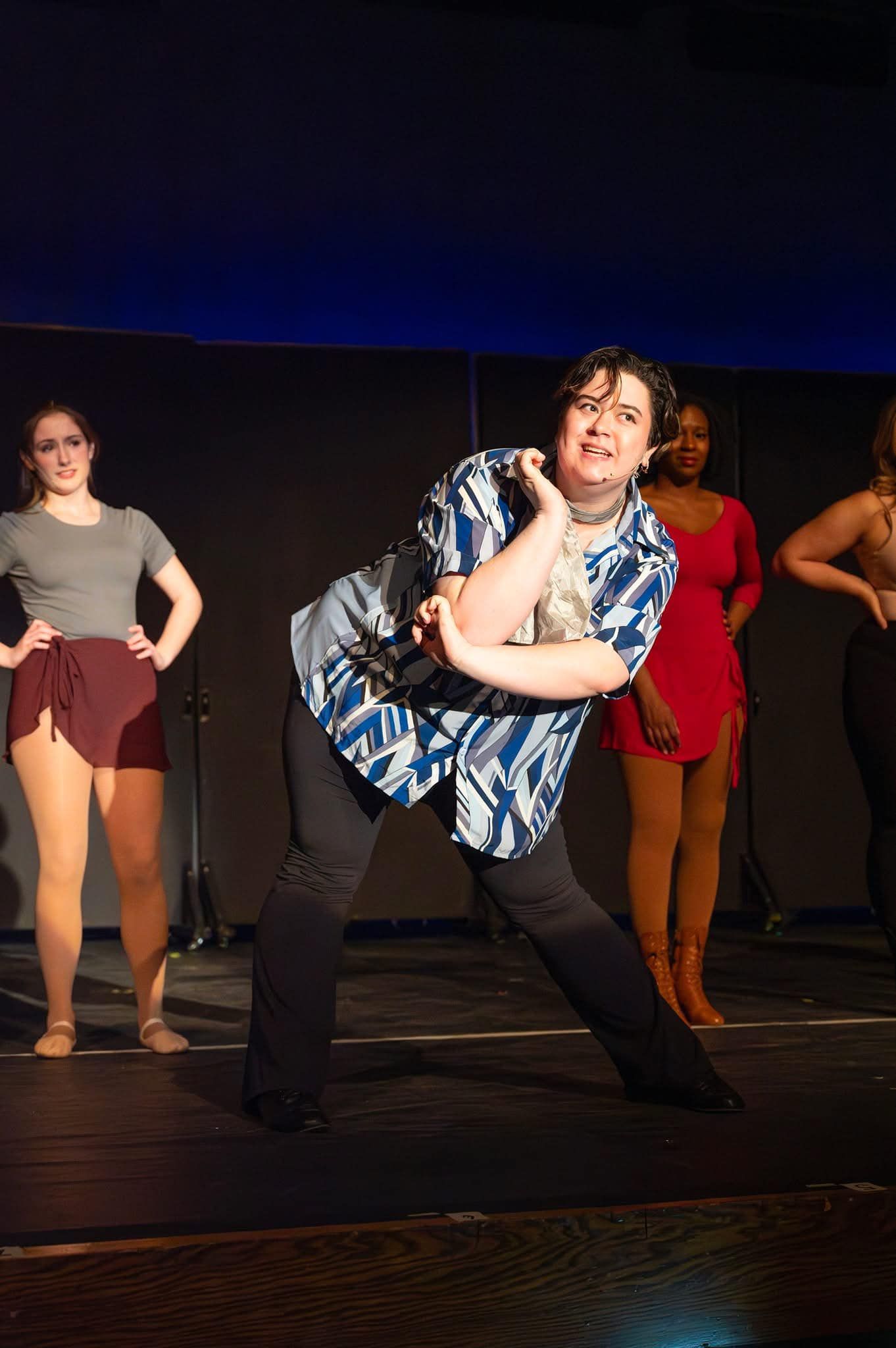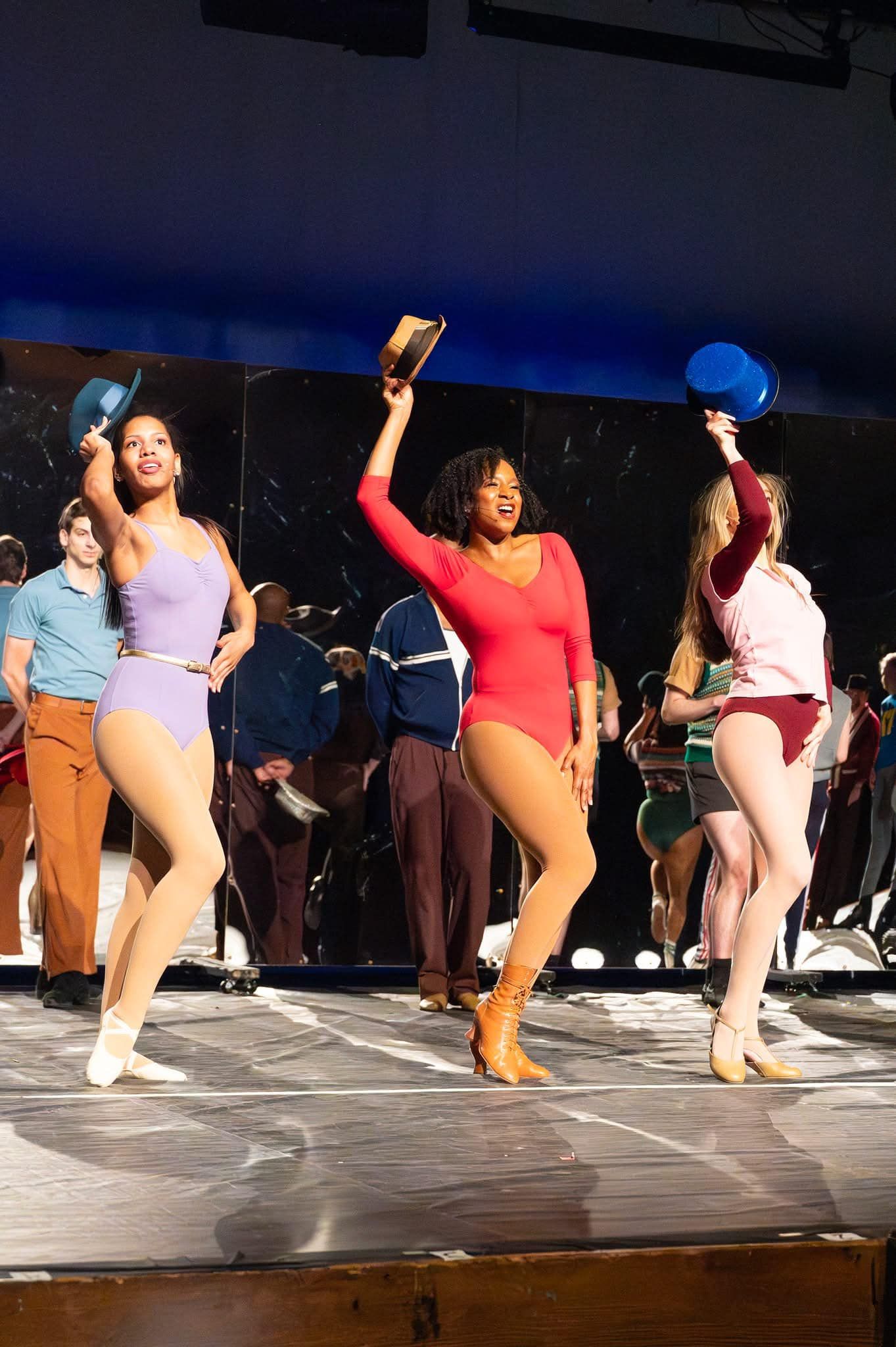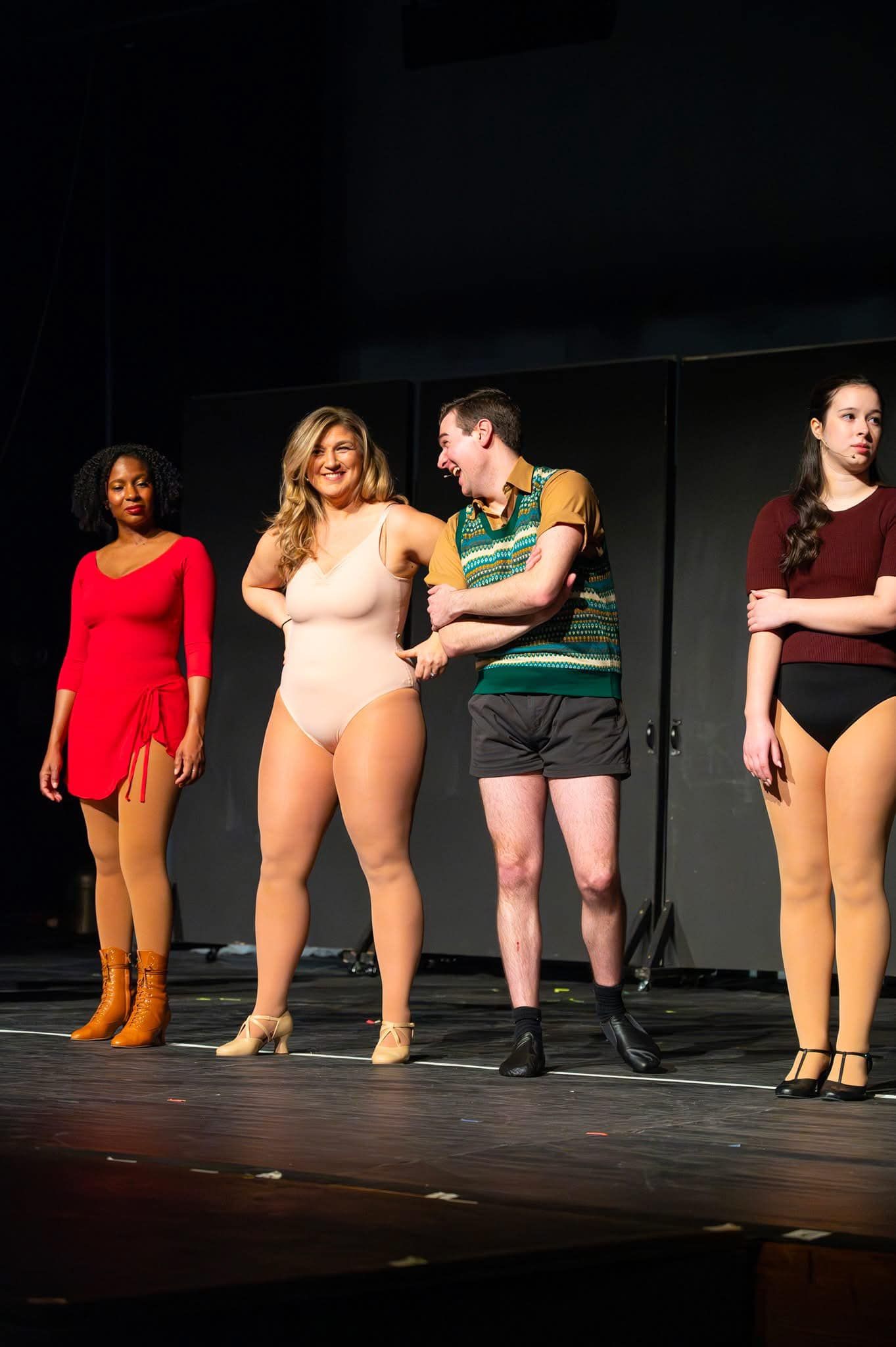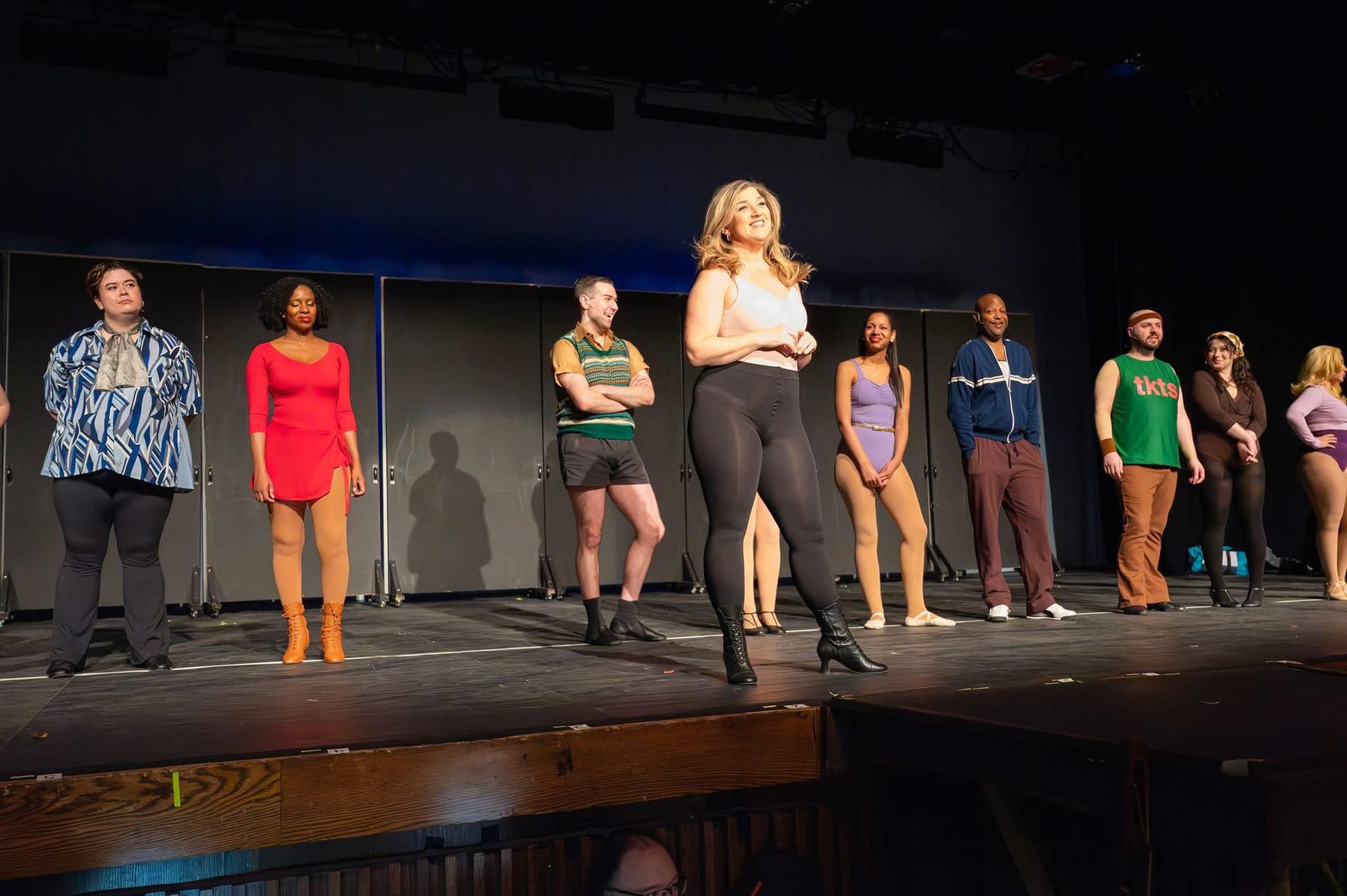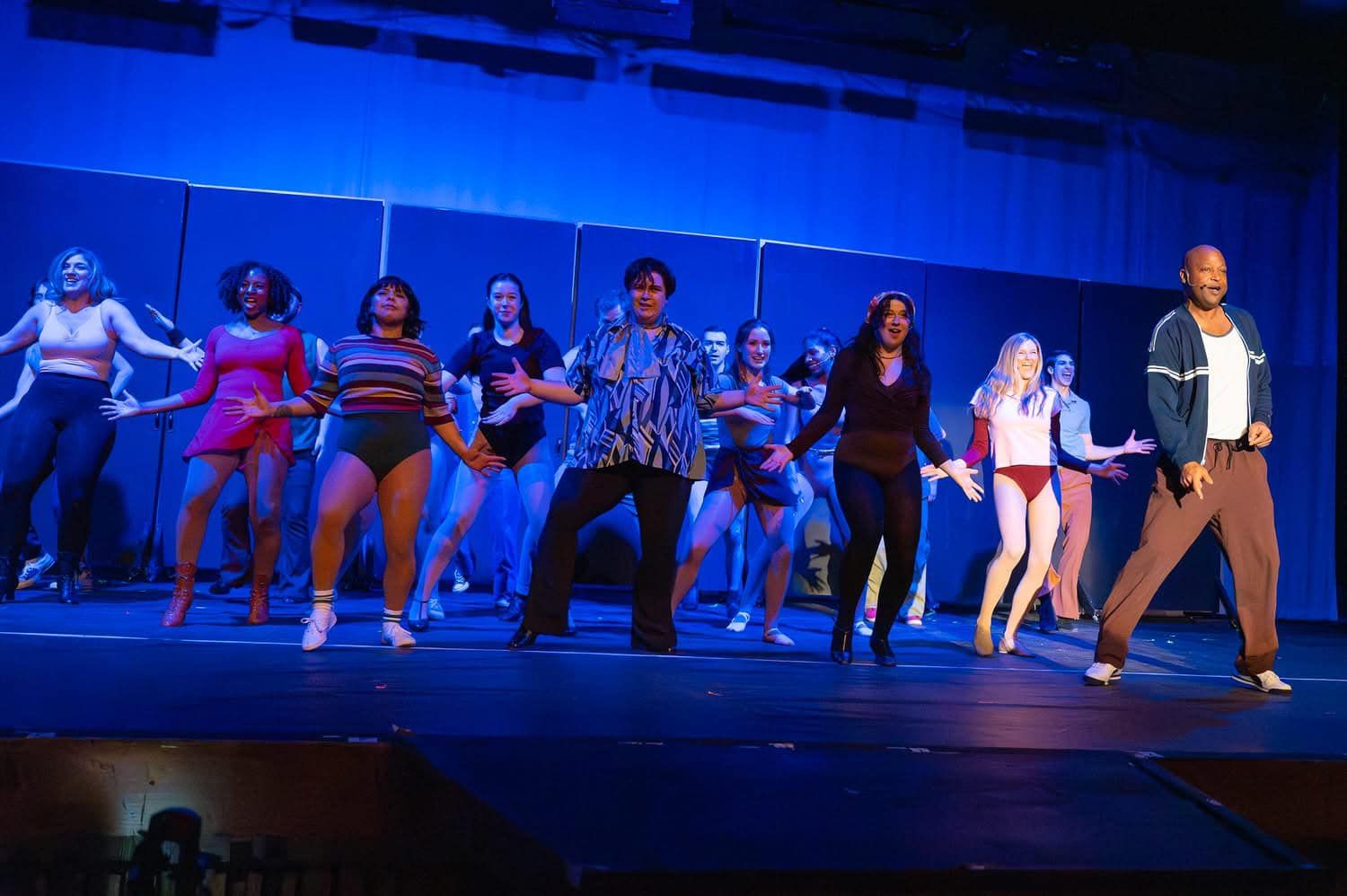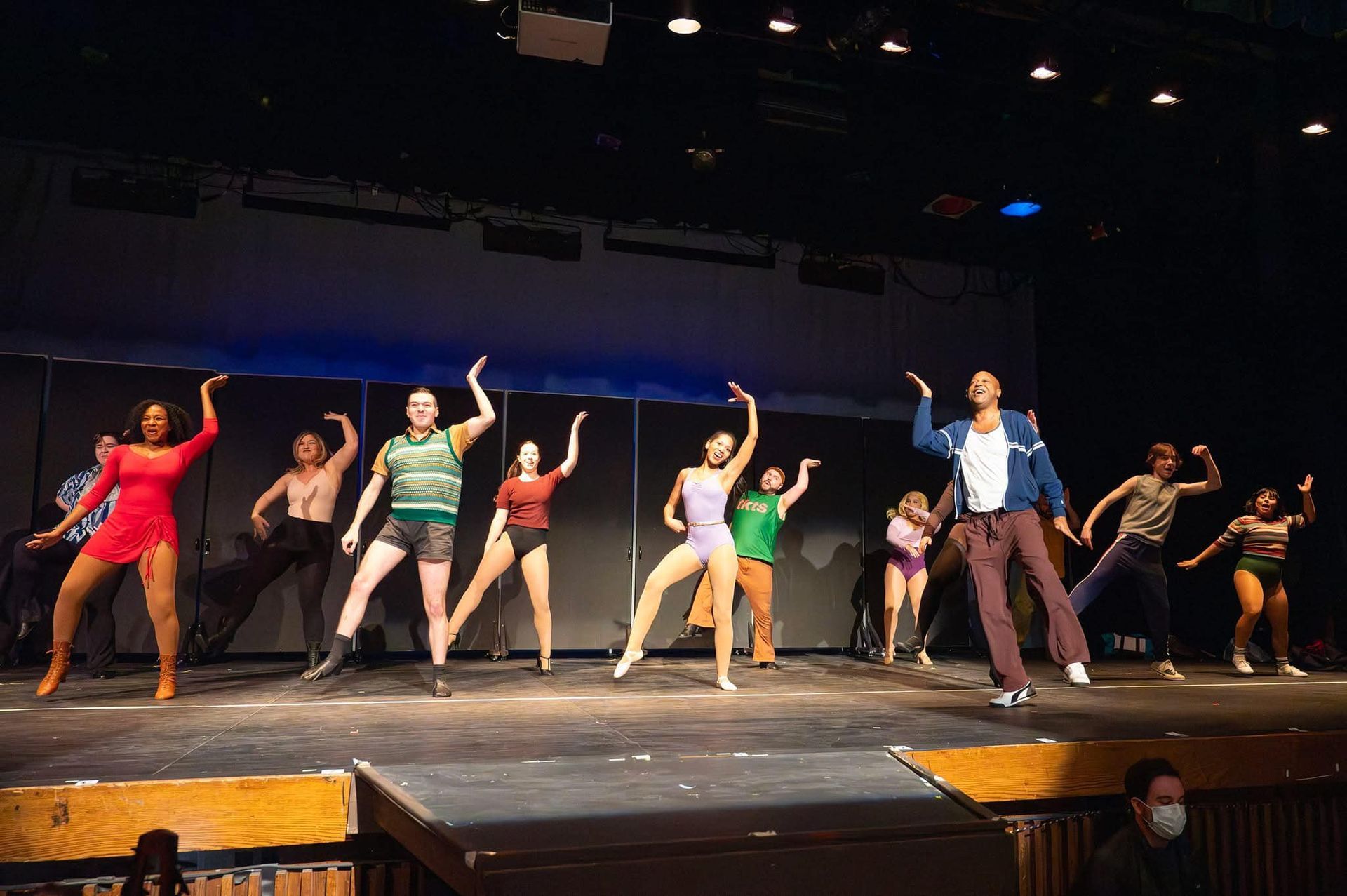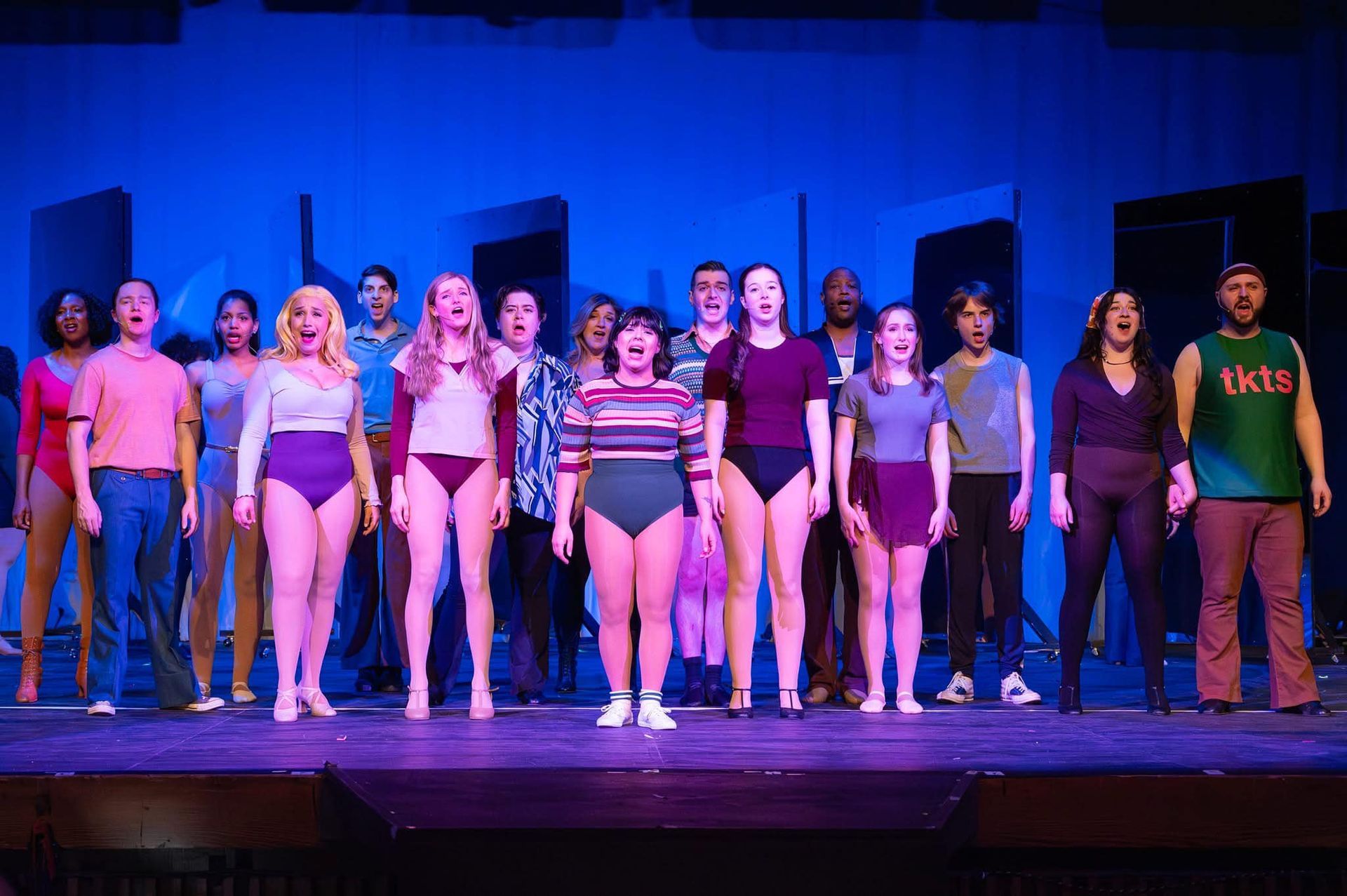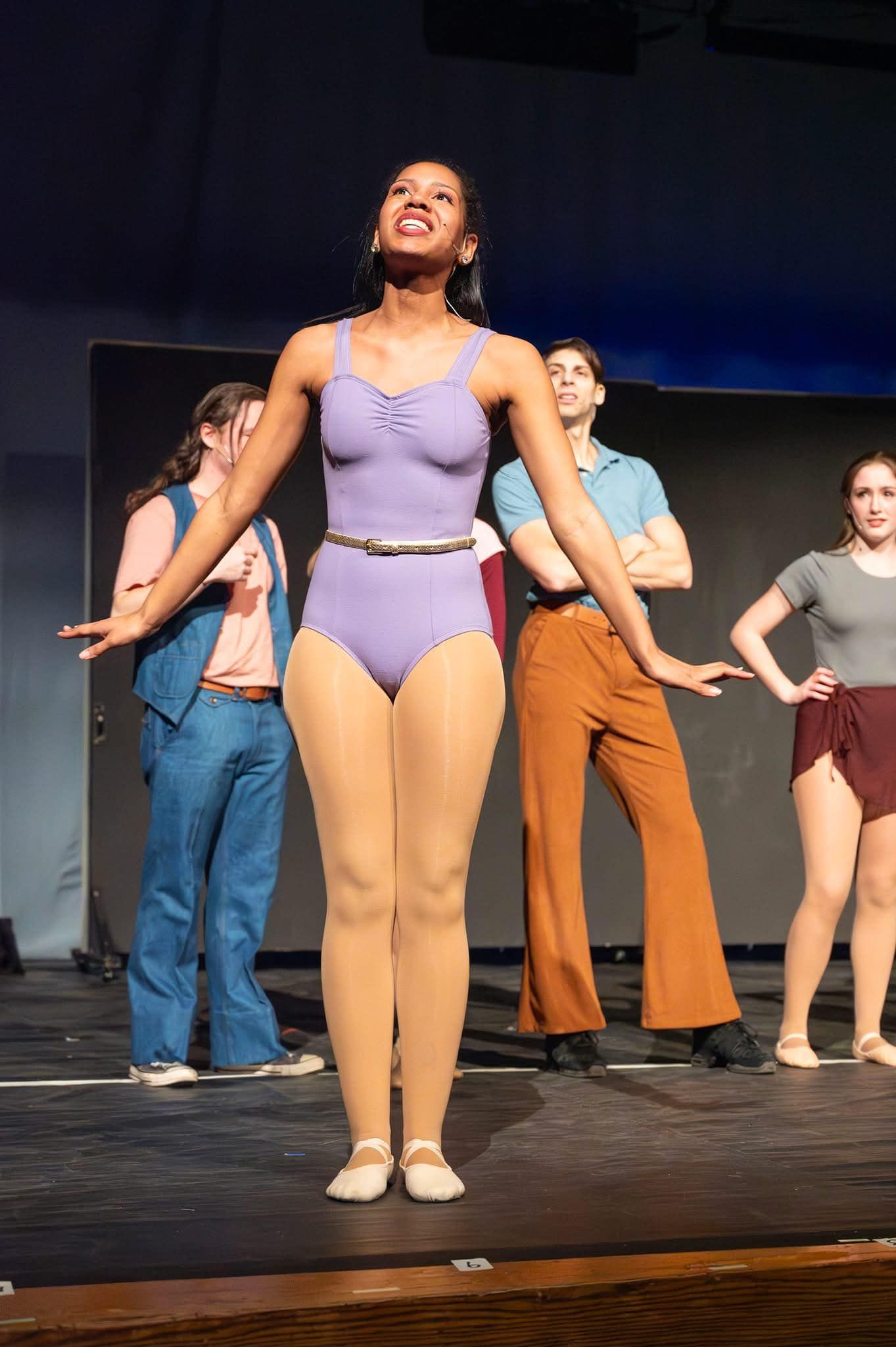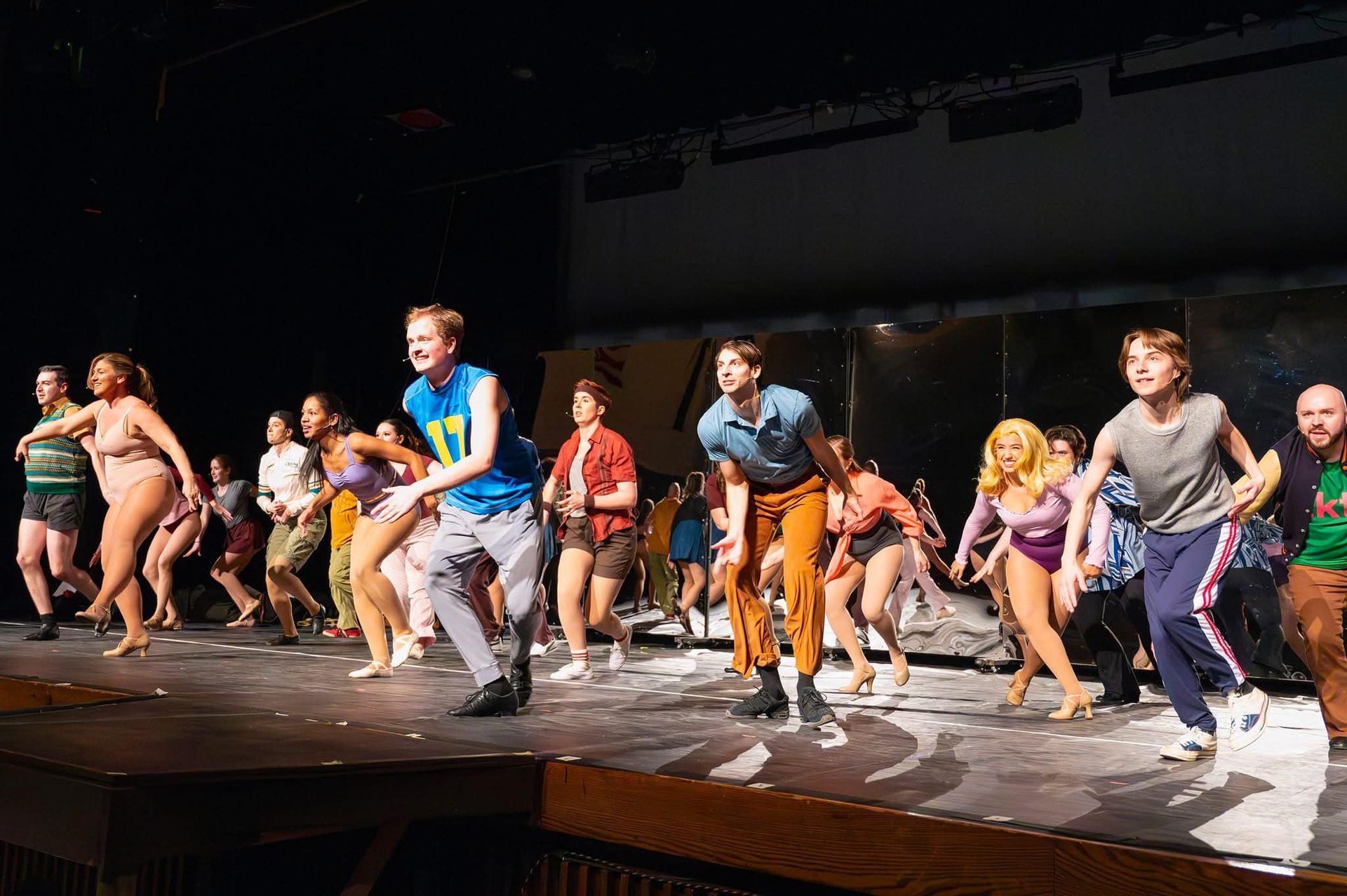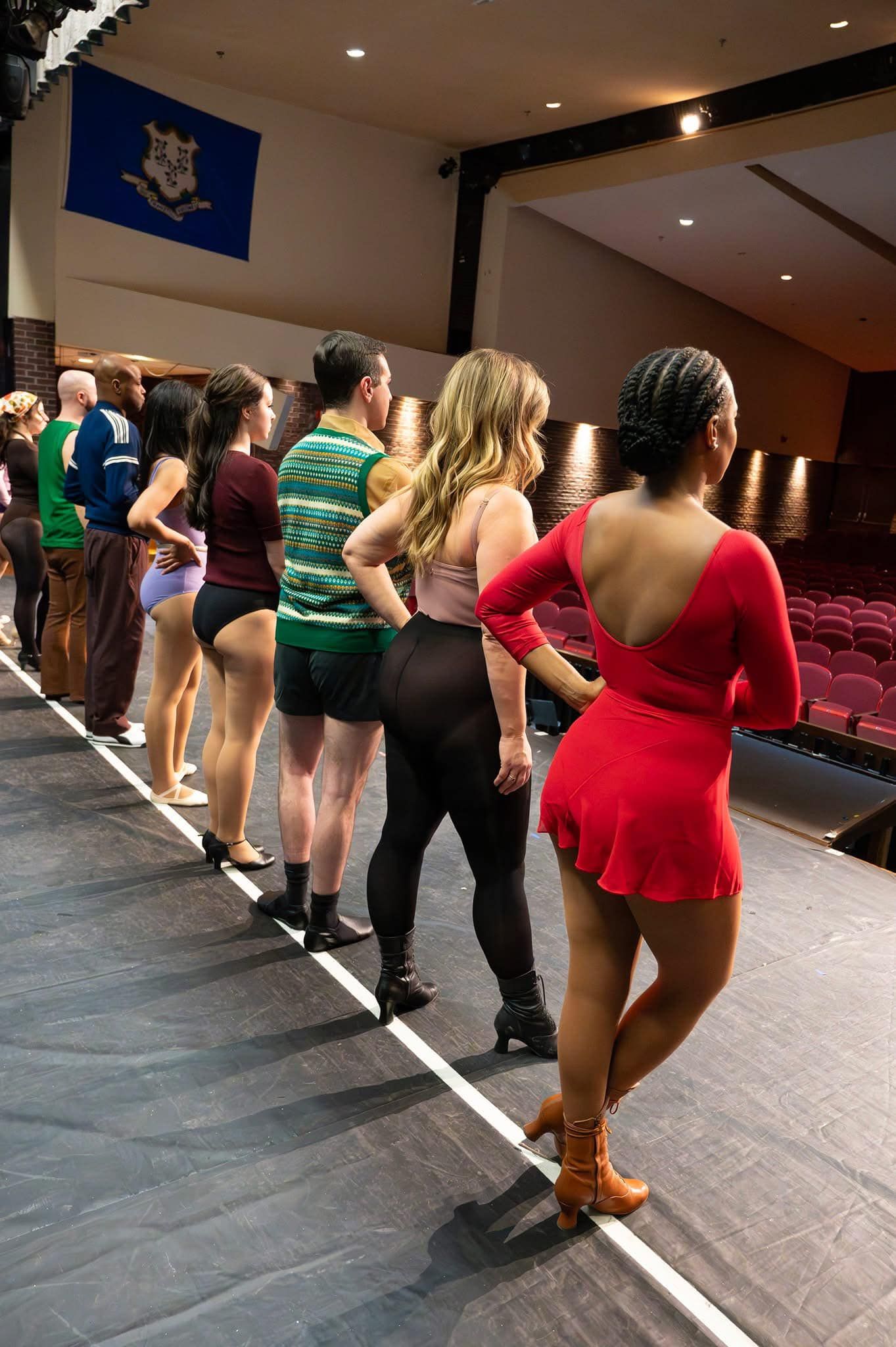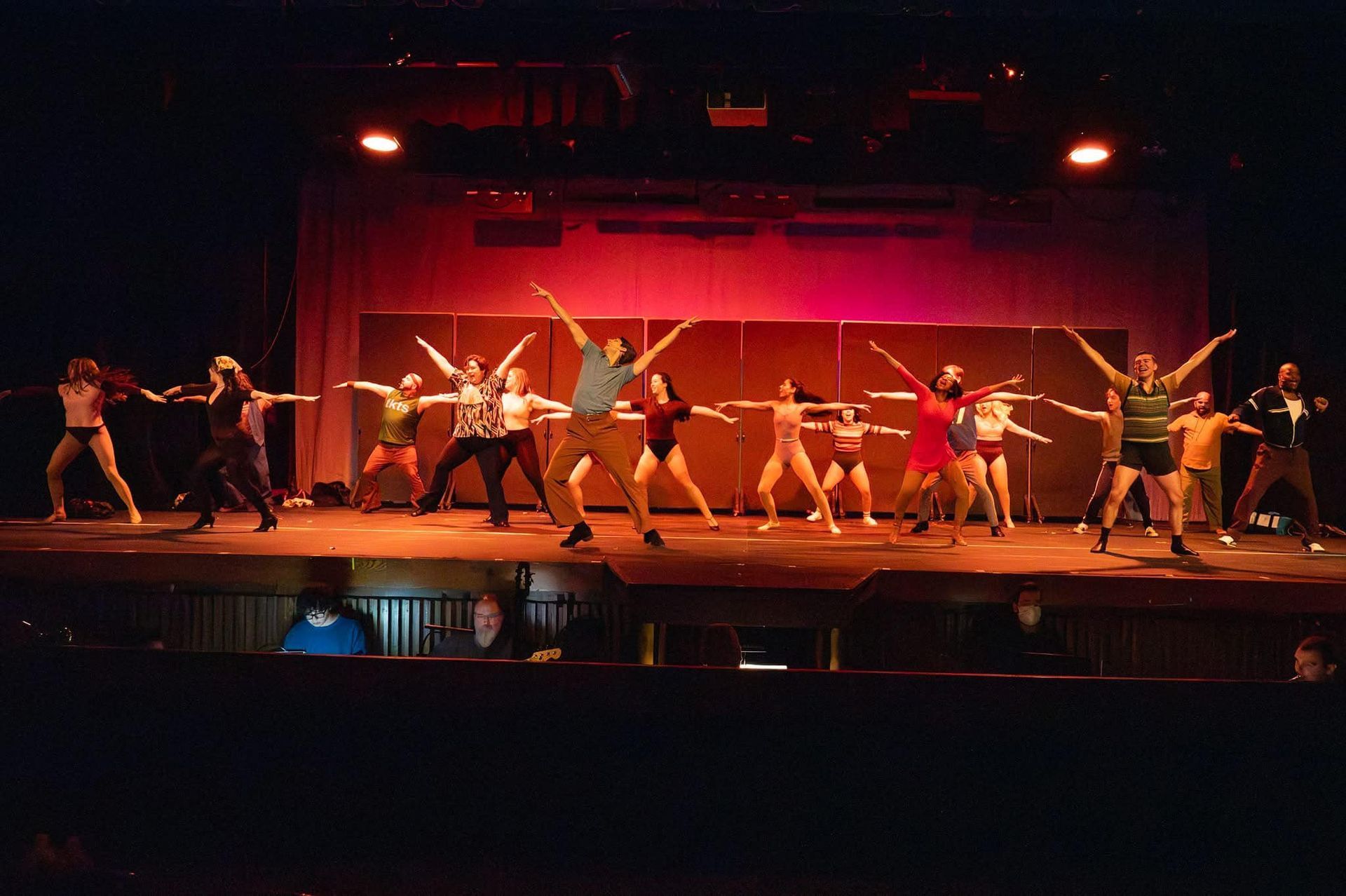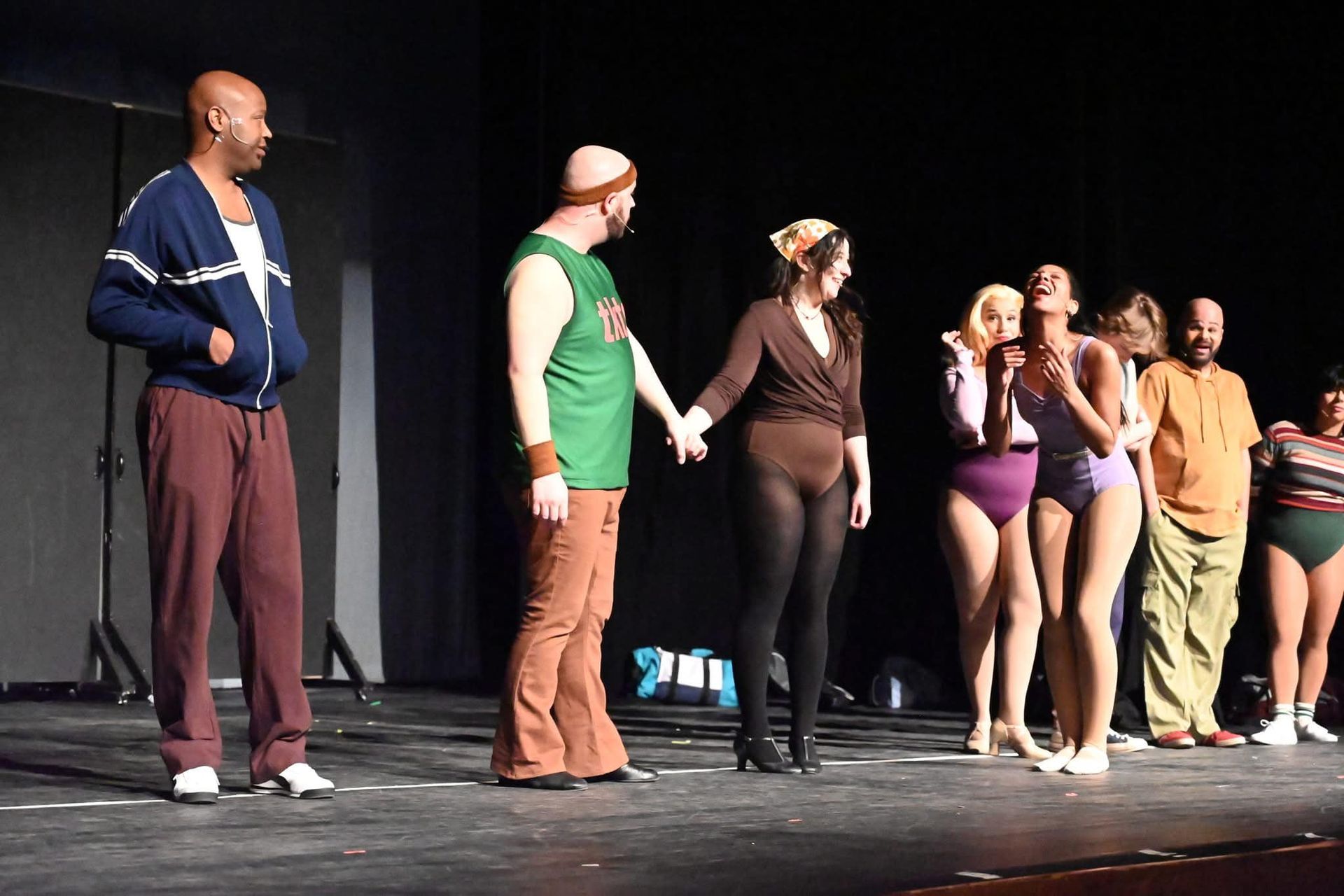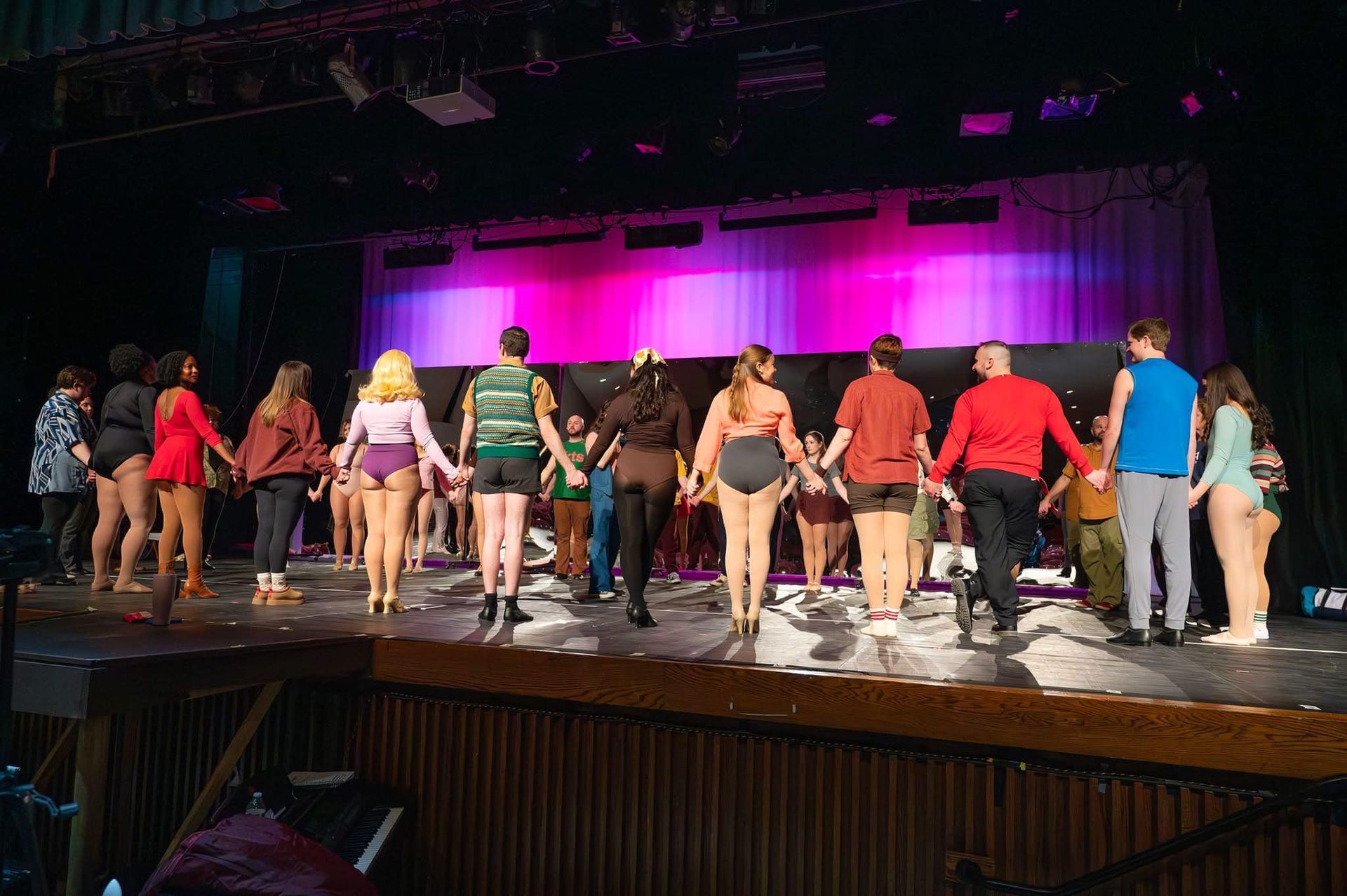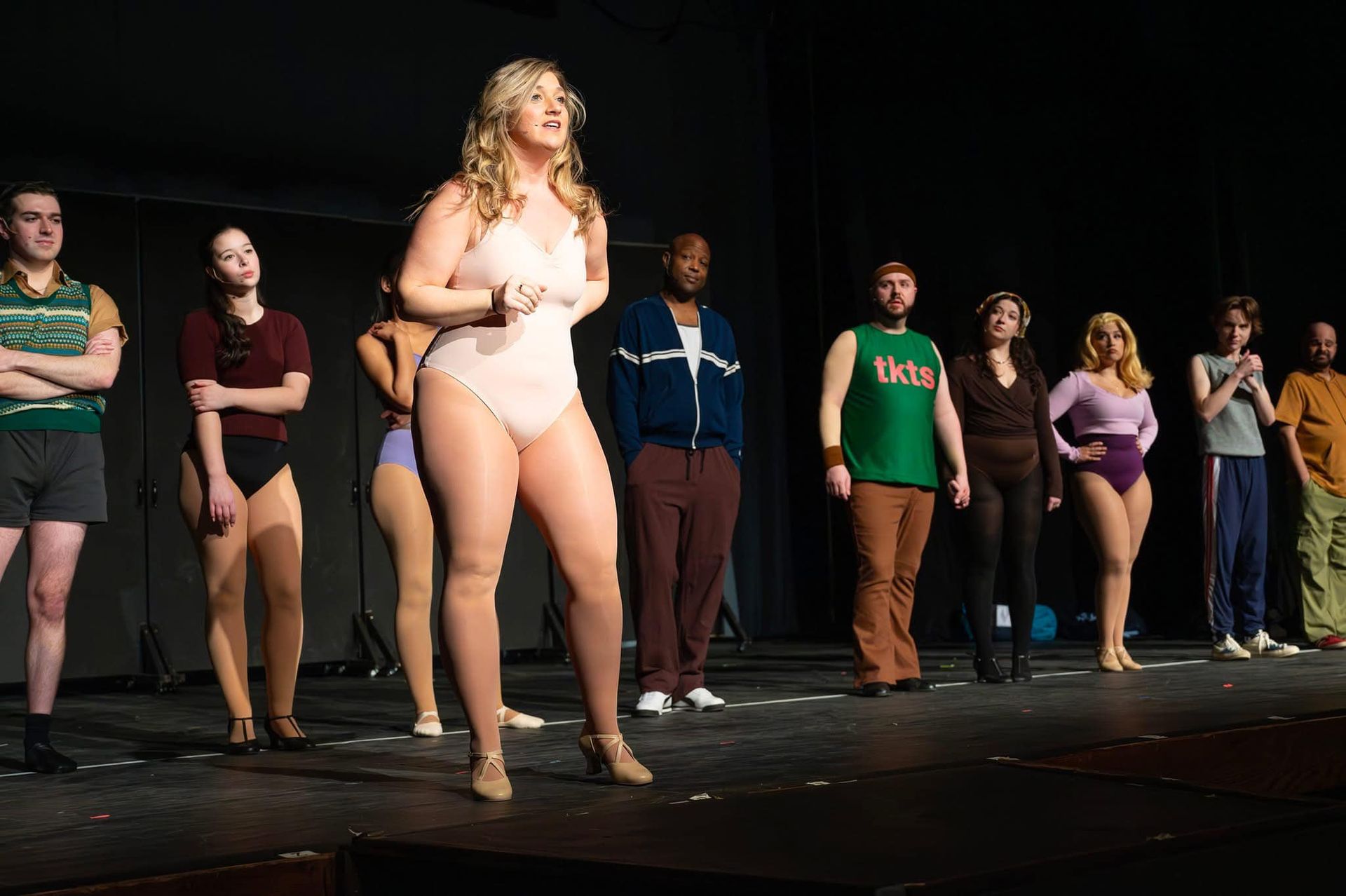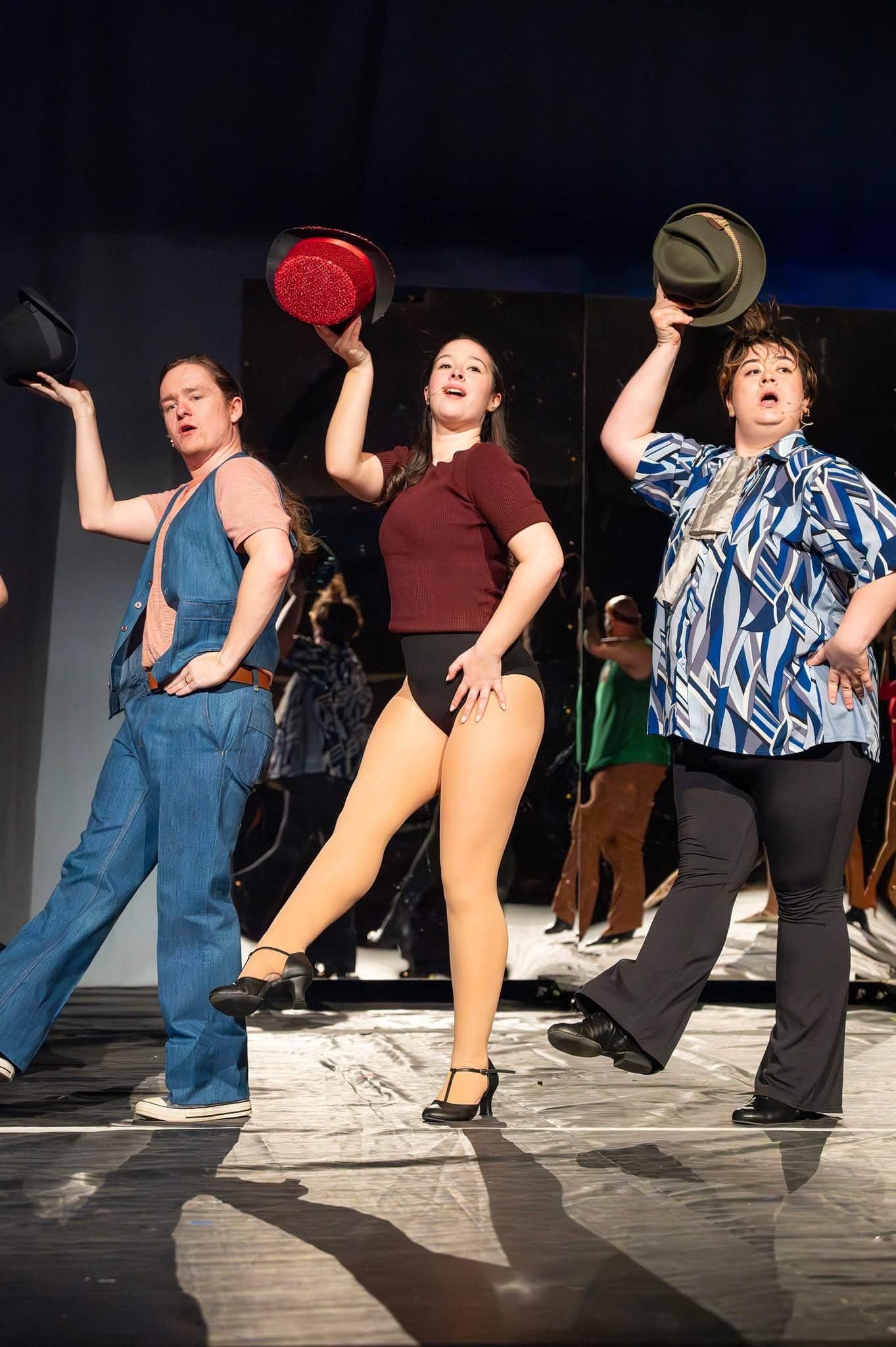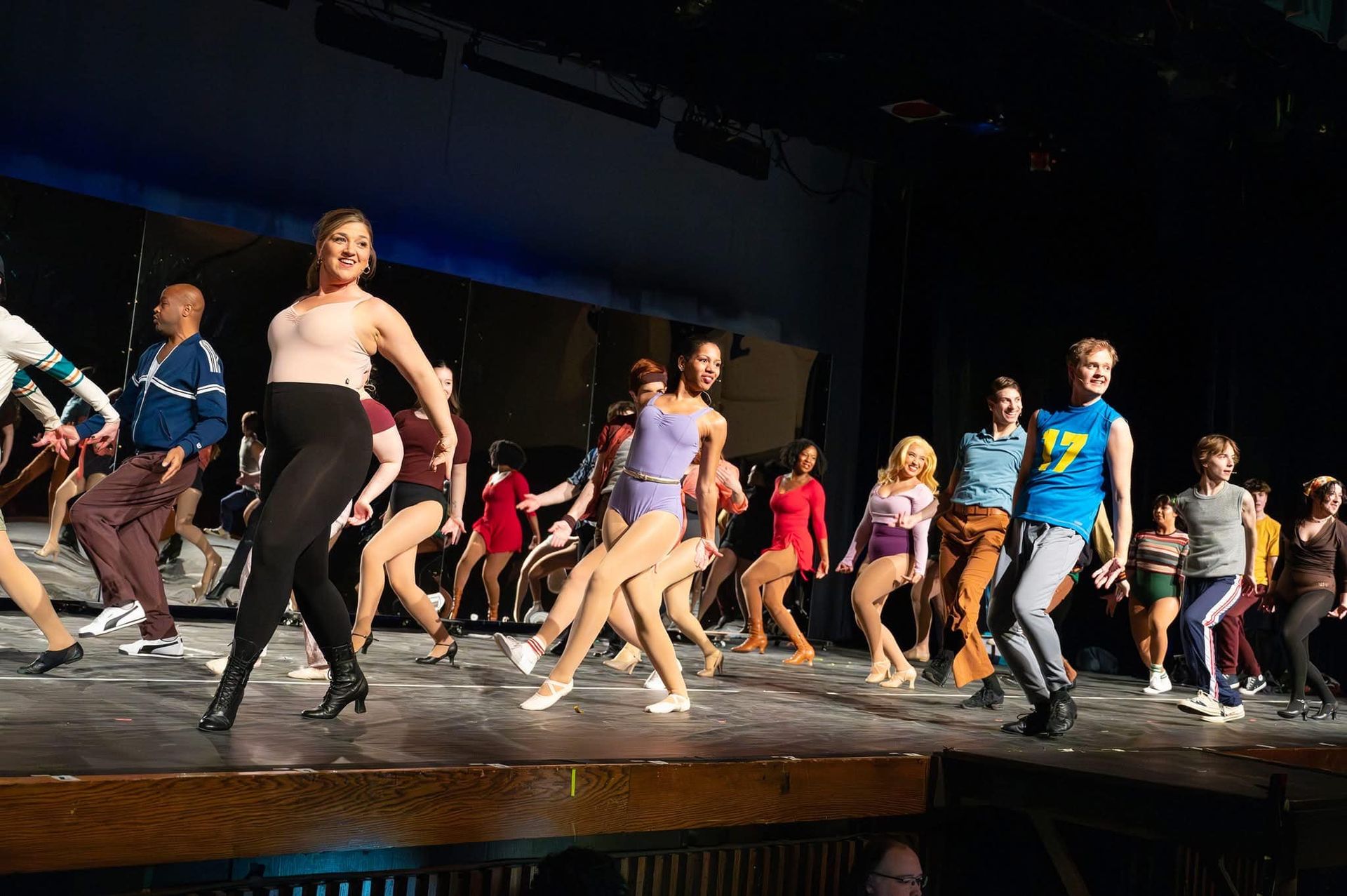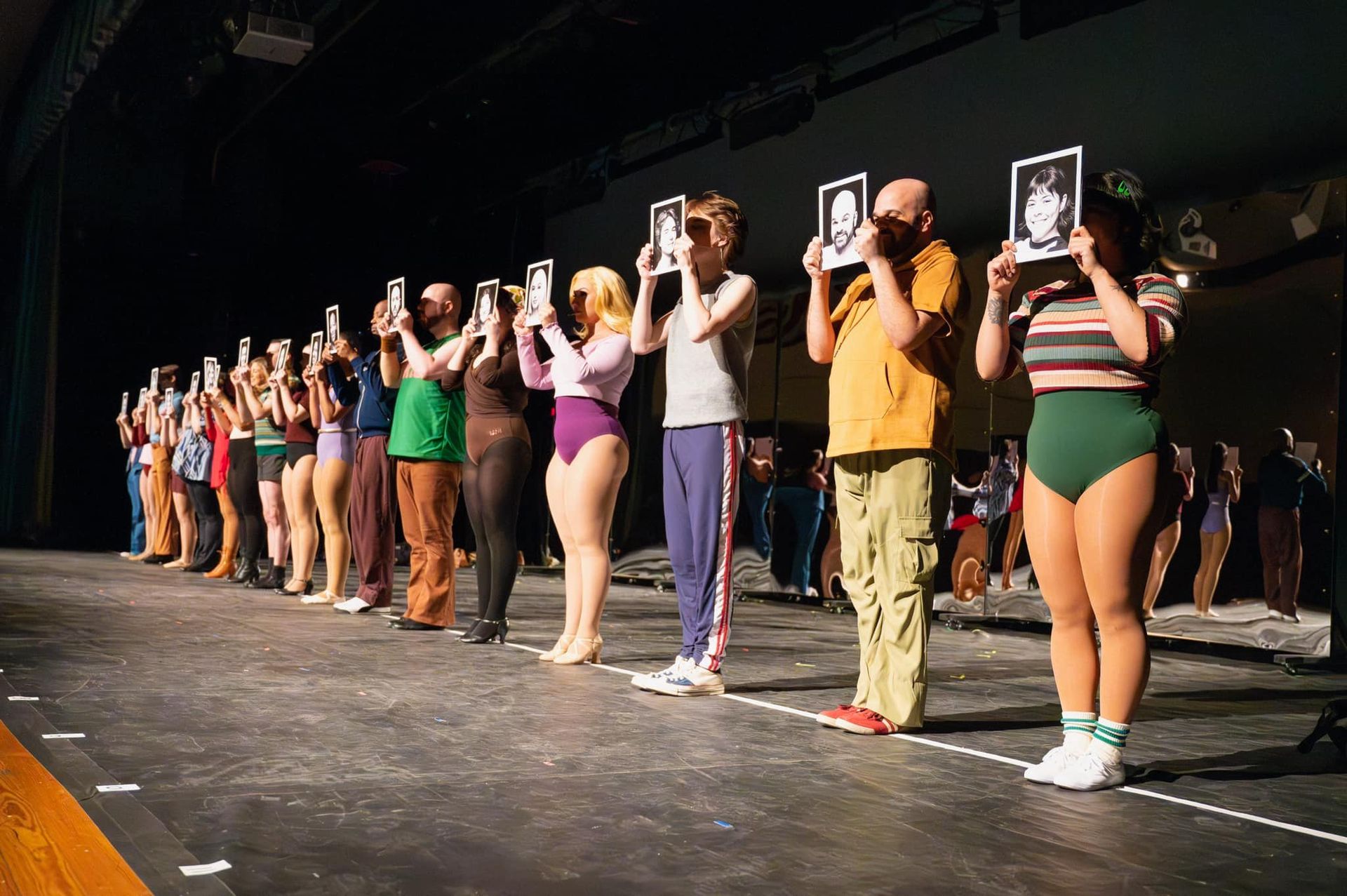A Chorus Line
Choreography Style / Approach
Working on this production has been a dream, coupled with a decent amount of pressure. There’s an enormous responsibility to “get it right” because these are real people’s stories, filled with countless details that matter. We often joked that it felt like choreographing a ballet with word salad — where every audience member already knows each little step (pun intended) and every word by heart.
The transcription of the original Broadway choreography was done and then edited, as needed, to highlight the strengths of our cast. (Using original choreography is not only allowed per the licensing agreement, but also highly encouraged with this title.) We were also fortunate to work with Luis Villabon, one of the few trusted “keepers of the A Chorus Line choreography,” who worked with our cast to learn the opening number during a full-day ACL boot camp. As a result, we retained all the iconic moments of this show, with any changes to other pieces of movement or staging still having a hat tip to the original.
A Chorus Line
Venue / Company
Opera House Players, CT
Year
2025
Role
Director - Choreographer
Cast Description
30 Adult Performers; Community Theatre
Choreographed Numbers
- I Hope I Get It
- And…
- Hello Twelve, Hello Thirteen, Hello Love
- Nothing
- Dance: Ten; Looks: Three
- The Music and the Mirror
- One (Rehearsal)
- What I Did for Love
- One (Finale)
Challenges / Innovations / Notable Moments
- Including an “ensemble” in more than just the opening number. Typically, the cut dancers in the opening number are never seen again. However, given that this was the 50th anniversary of the show, we decided to pay a little nod to the flashback scenes presented in the movie adaptation through our ensemble. So, in addition to being cut dancers and off-stage singers, they were also utilized in "Sing," "At the Ballet," "Nothing," "What I Did for Love," and the Finale.
- A 5678!: That first moment when the full company is facing away from the mirror. If you know, you know.
- Montage 4: Just pure joy.
- What I did for love. Our Diana was a force. We added a layer of emotion by turning the mirrors a quarter of the way and having ensemble members sing into the reflection. The stillness of movement combined with reflection created a different kind of over-the-top energy as a contrast to the dance-heavy songs.
- Diversity: The casting process included specific character requirements related to gender and ethnicity, which we honored as they were essential to certain characters’ identities and stories. Beyond those roles, we prioritized inclusive and thoughtful casting, which resulted in a richly diverse full company. I'm proud of the talent, representation, and collaborative spirit that shaped the final cast.
- In/Out of Real Time: Having all movement start and end on the line was a challenge that turned out to be a real highlight of the show.
- Finale: A sea of gold! One of Michael Bennett’s goals was to make the audience feel like they were part of the theater experience. We echoed that by ending the kickline with dancers both on stage and in the house, using timed lighting cues to let them gradually fade so it felt like a distant dream and gave the illusion that the line extended endlessly.
- We also added a burst of gold confetti on count 2 of the final horn blare.
Video Highlights
Show Gallery
Photos by Sarah Stephens
con·tact
